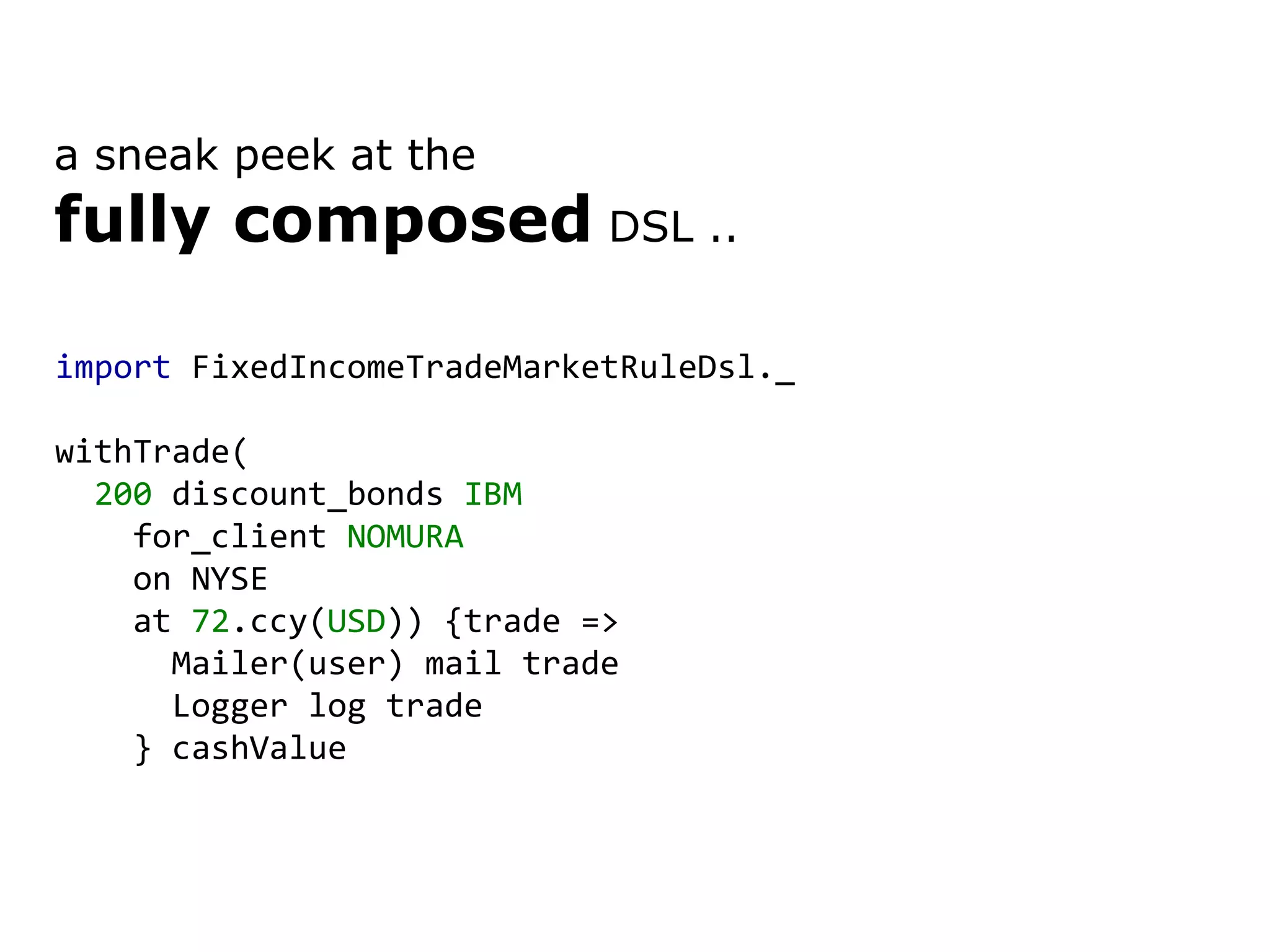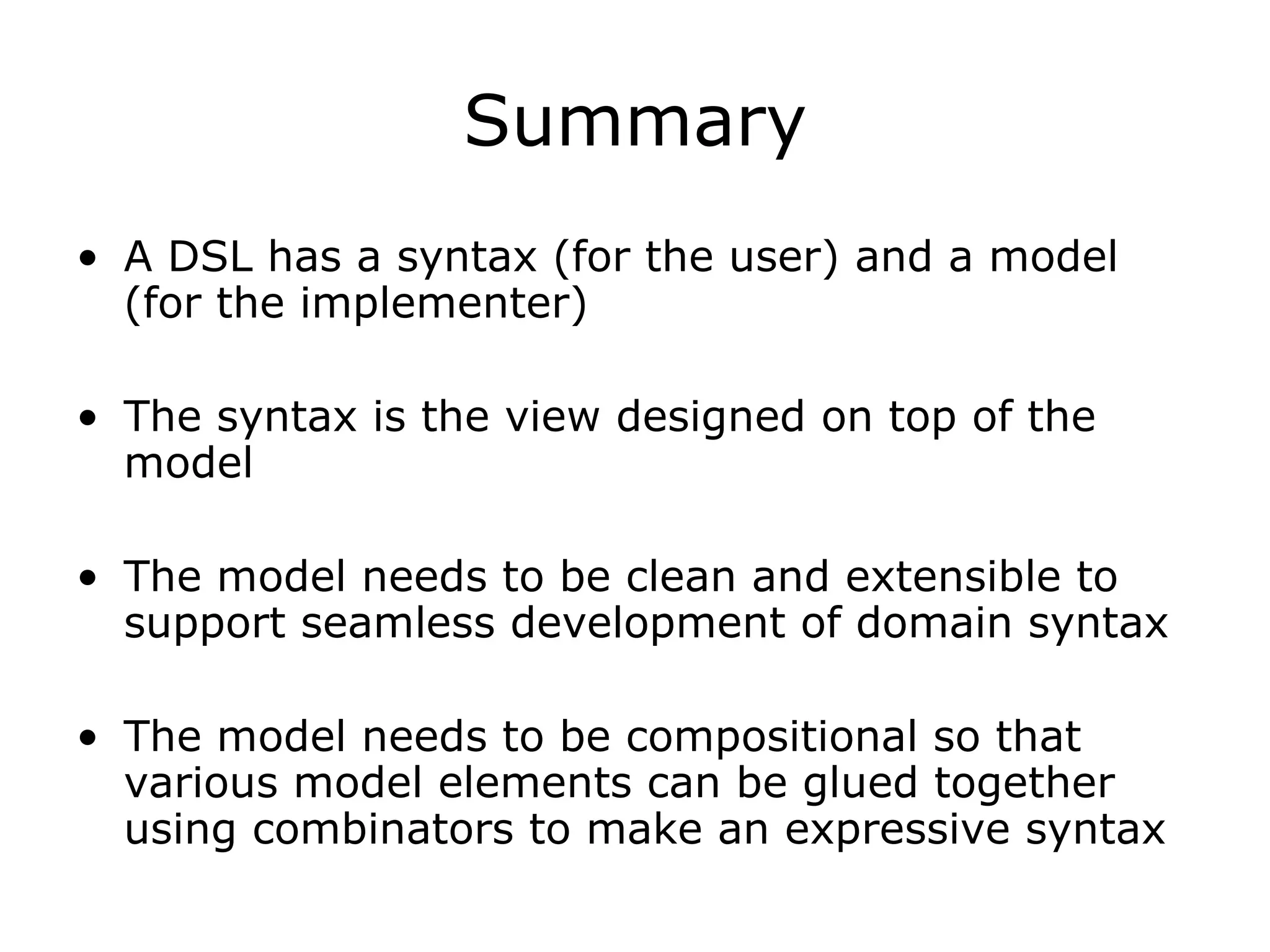The document discusses domain-specific languages (DSLs) and their model-view architecture, focusing on how abstractions shape their structure and the importance of choosing proper abstractions for compositionality. It illustrates the implementation of DSLs using examples in various programming languages like Ruby, Scala, and Clojure, emphasizing the ability to enrich domain models with business rules and calculations. The content highlights the strategies used in designing DSLs to maintain separation of concerns while enabling flexibility in logic and representation.
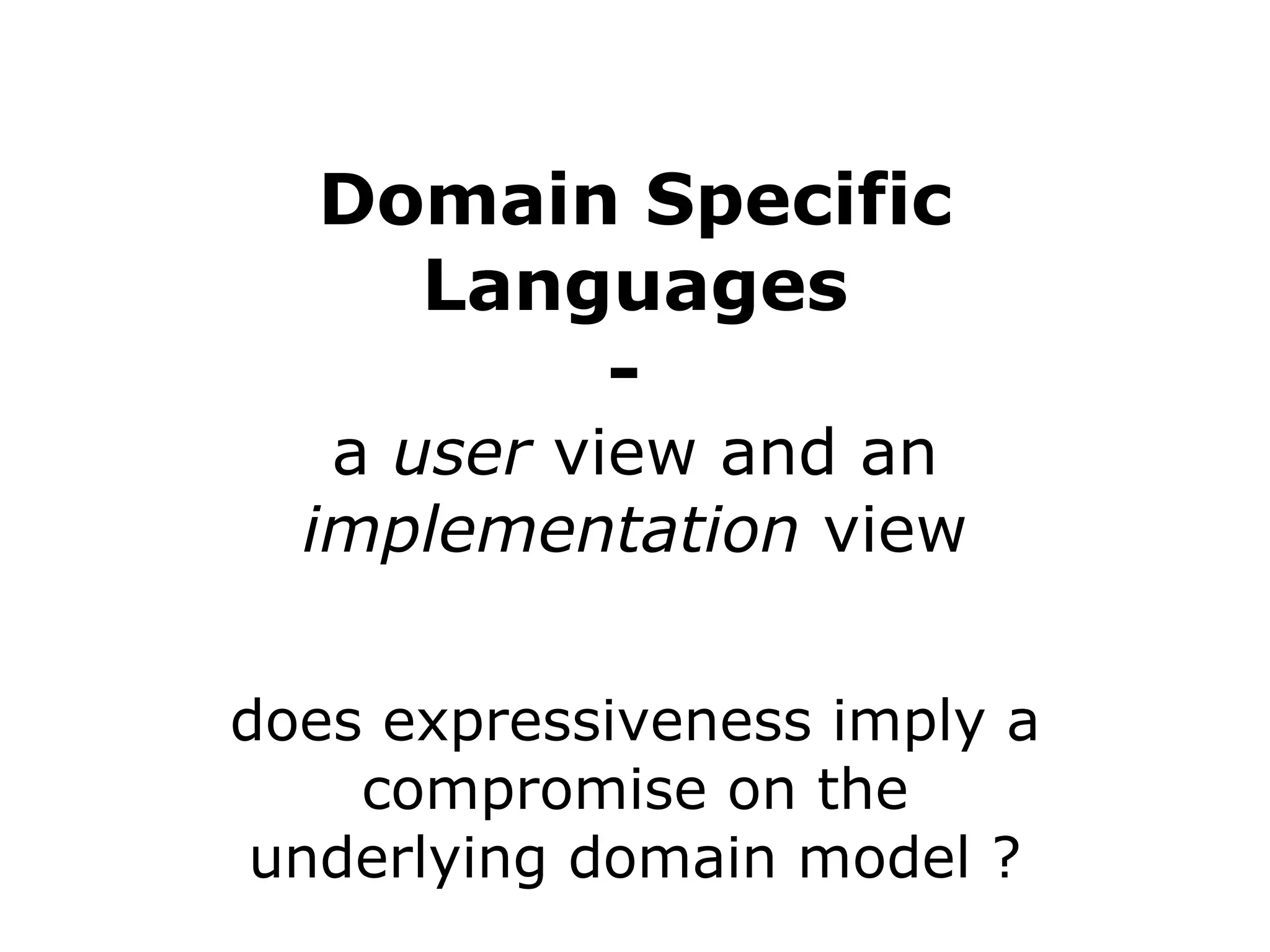

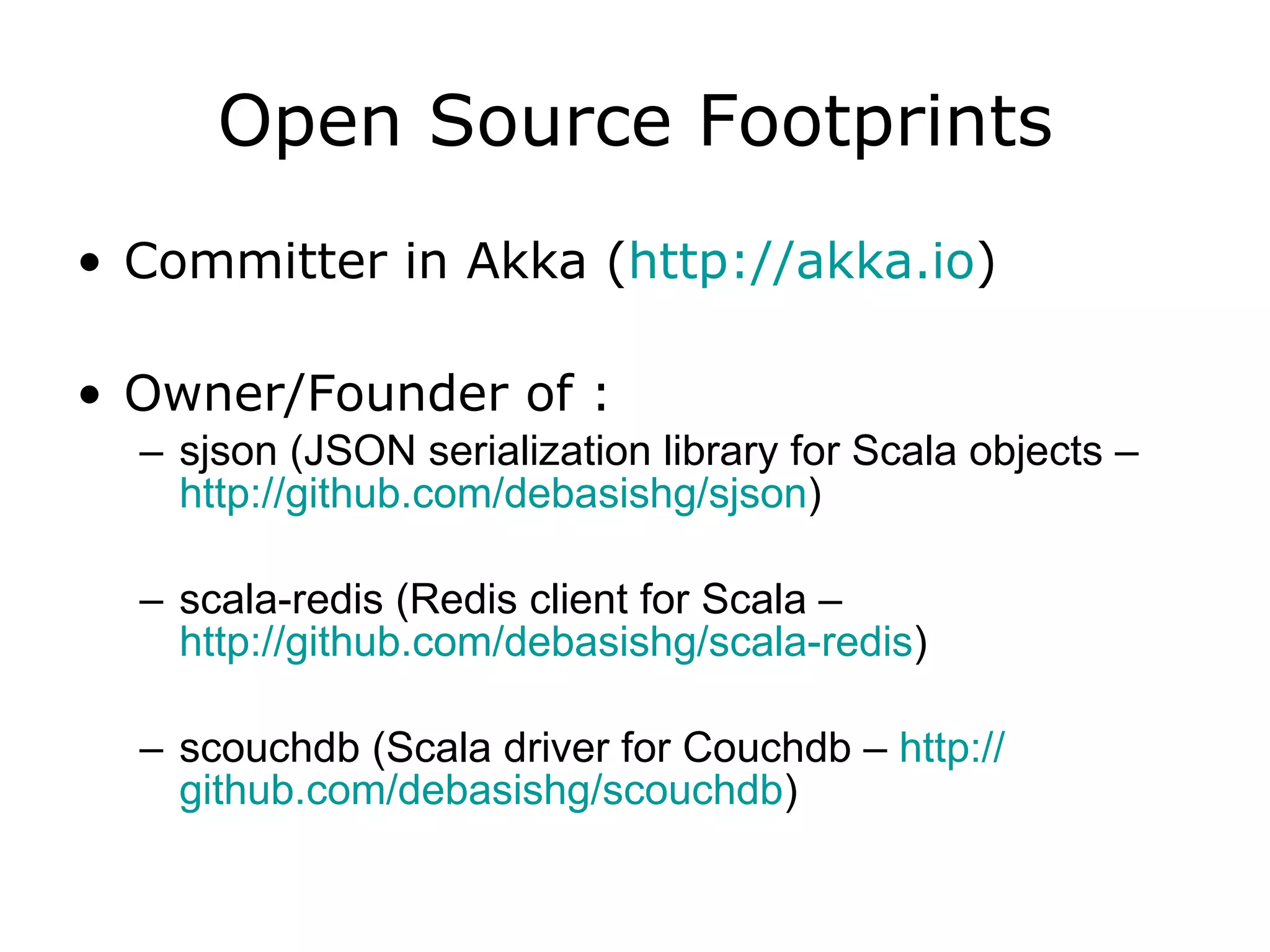
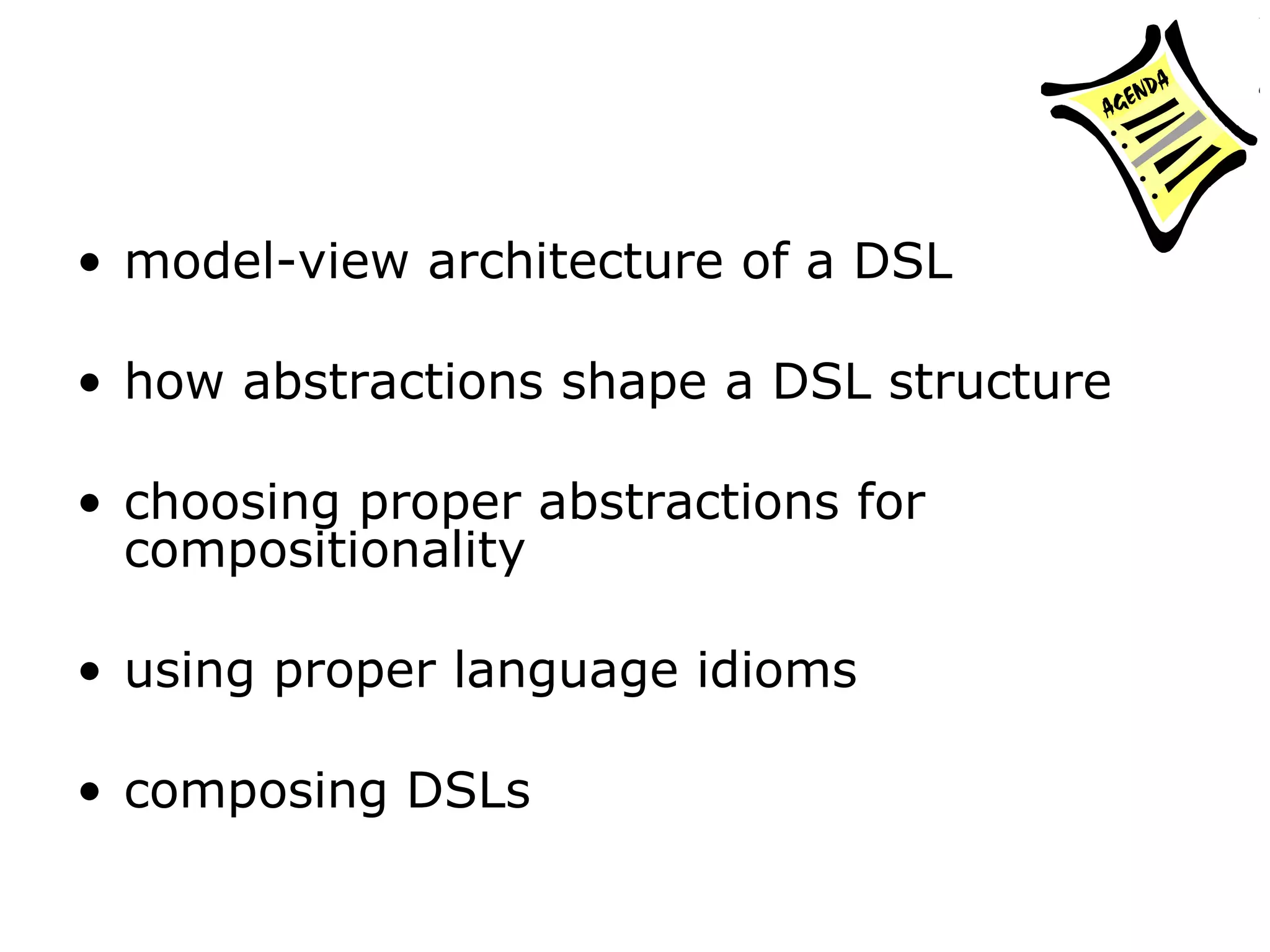
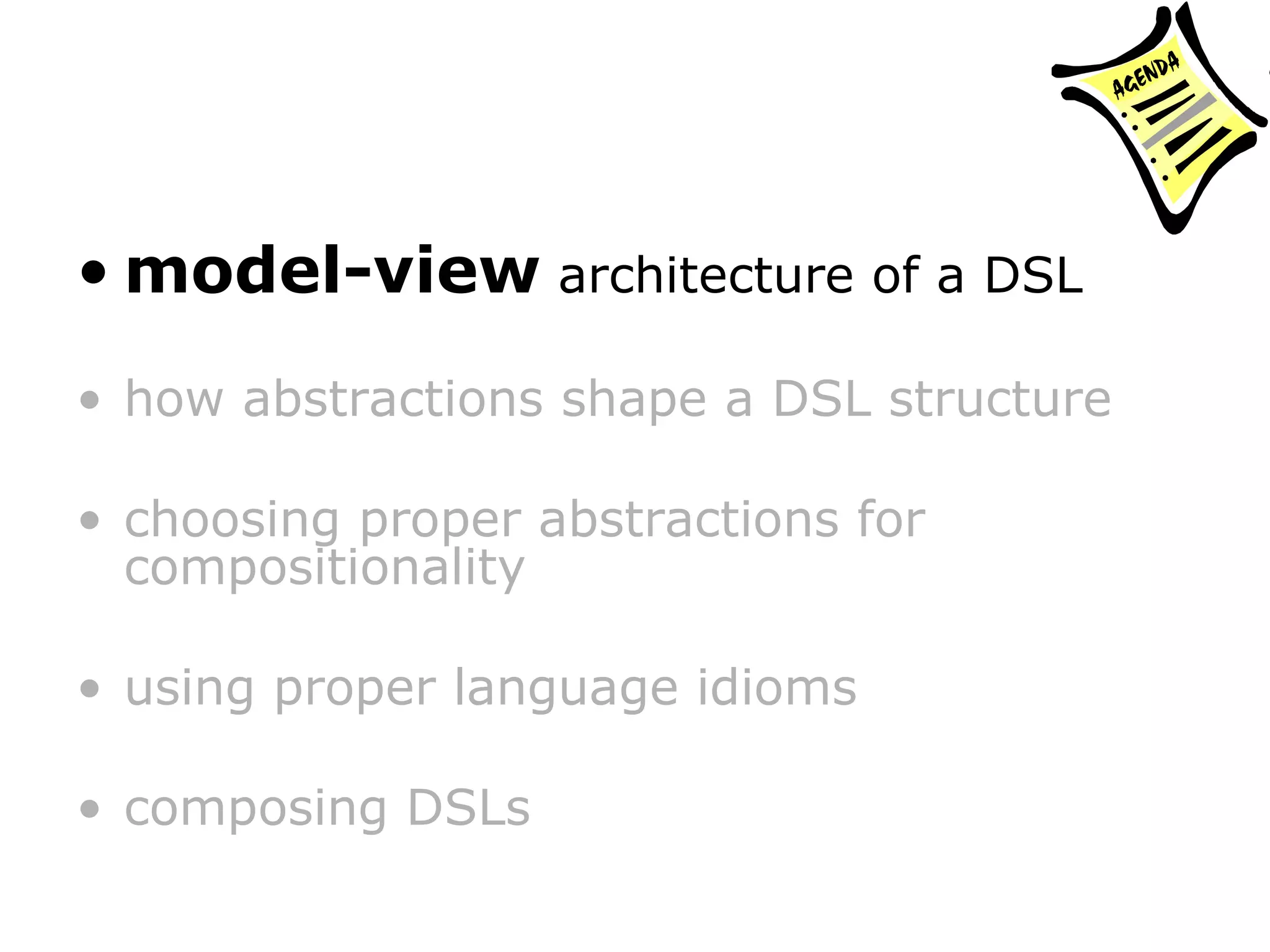
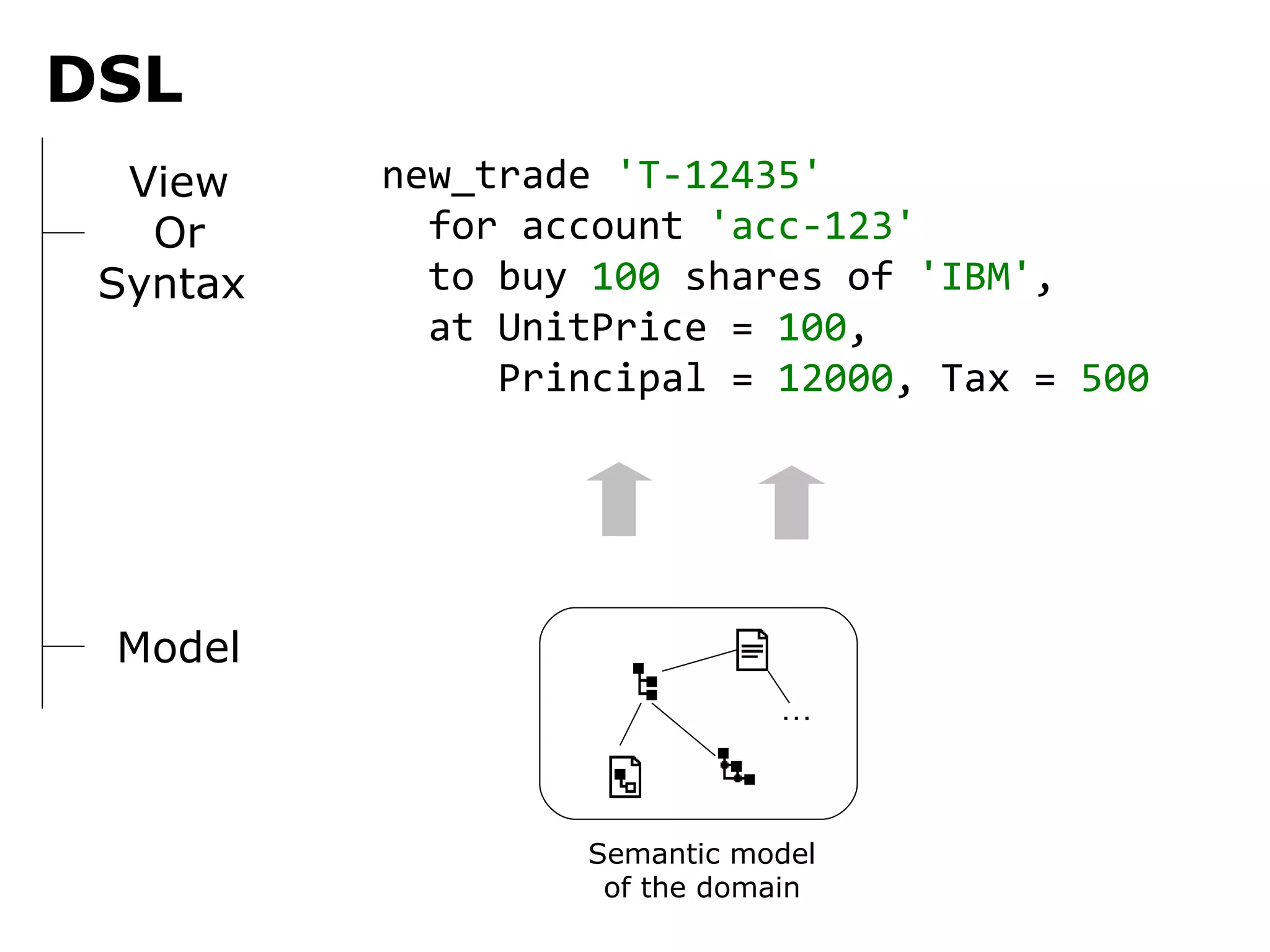


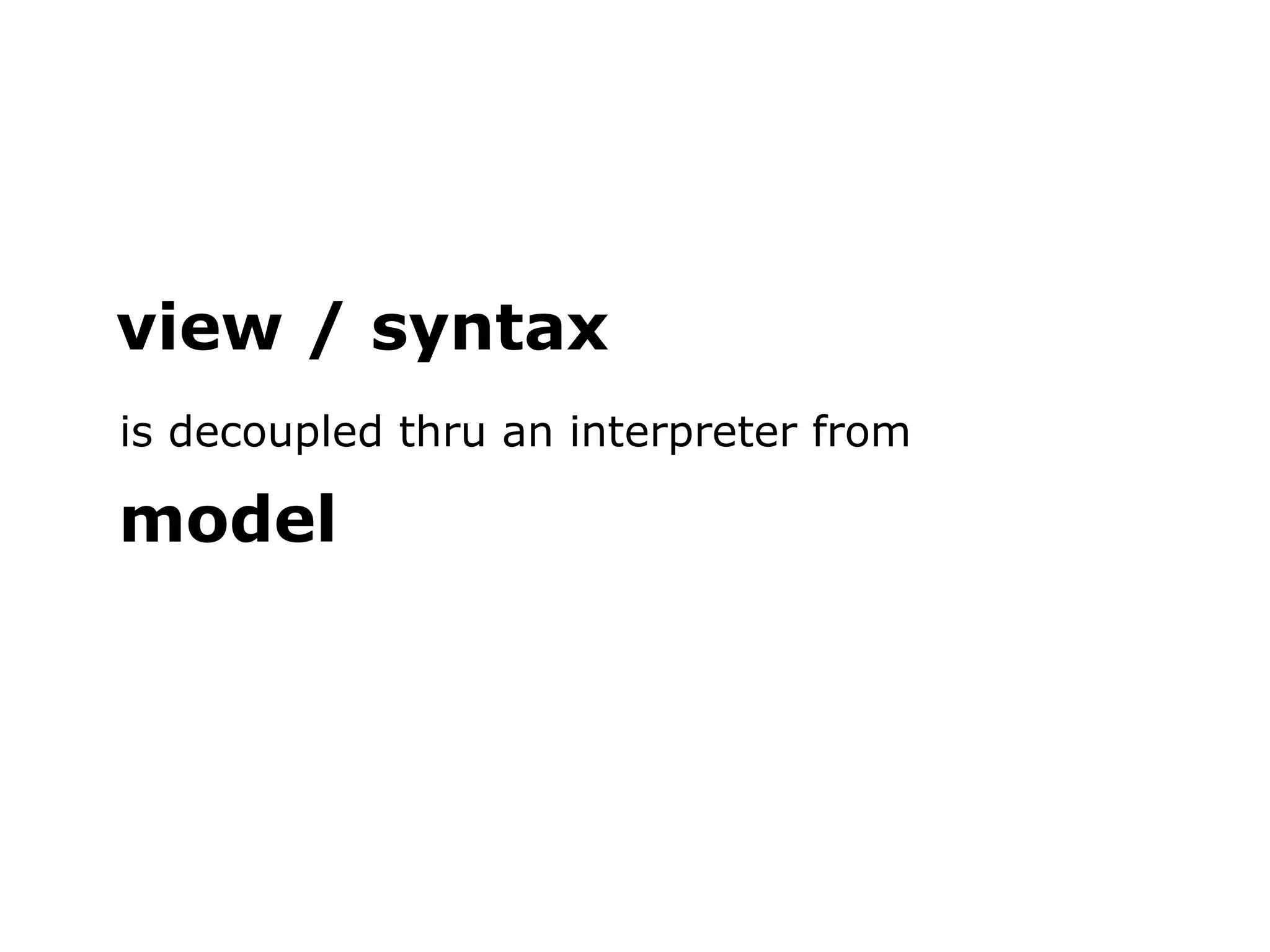
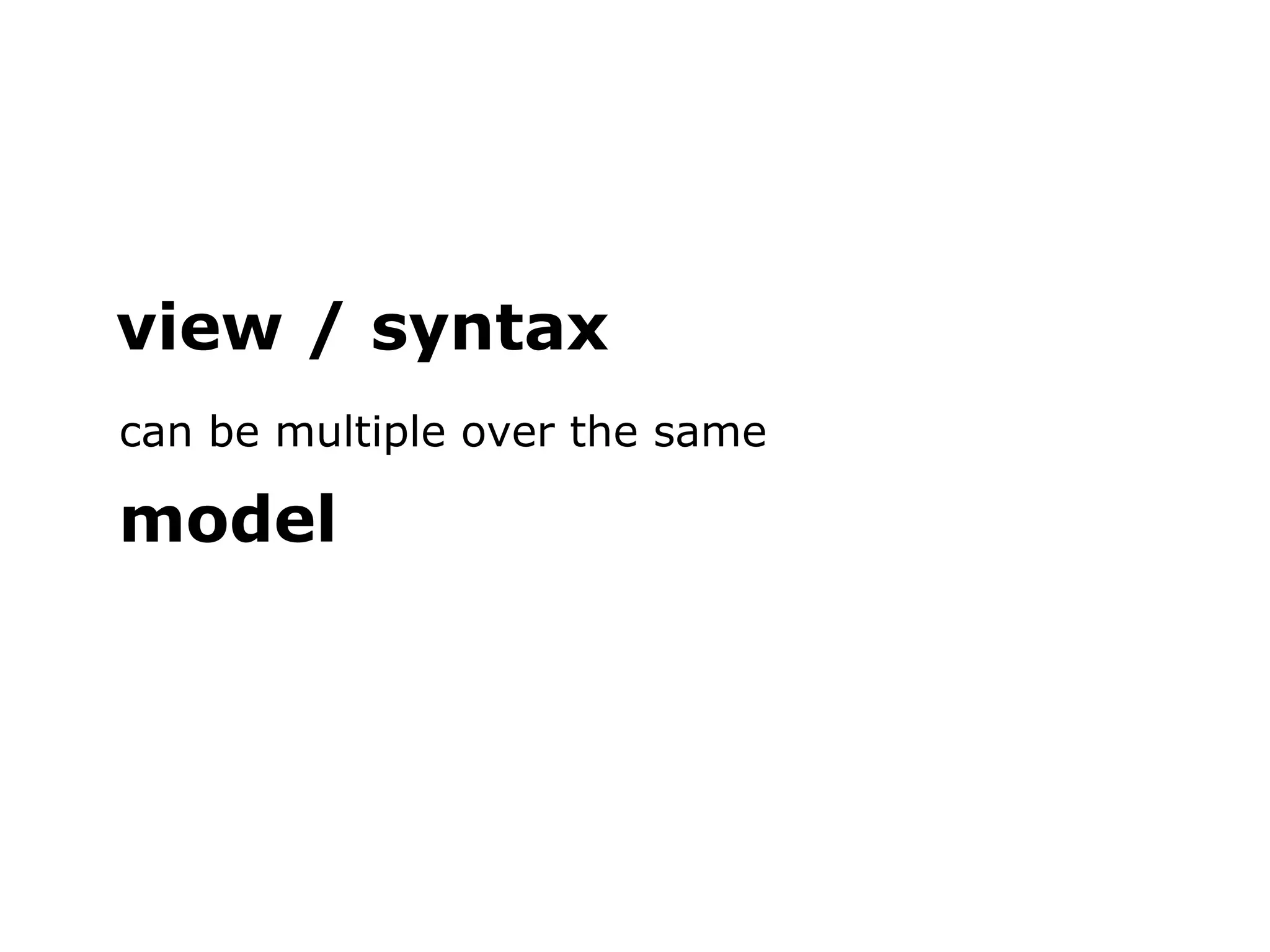

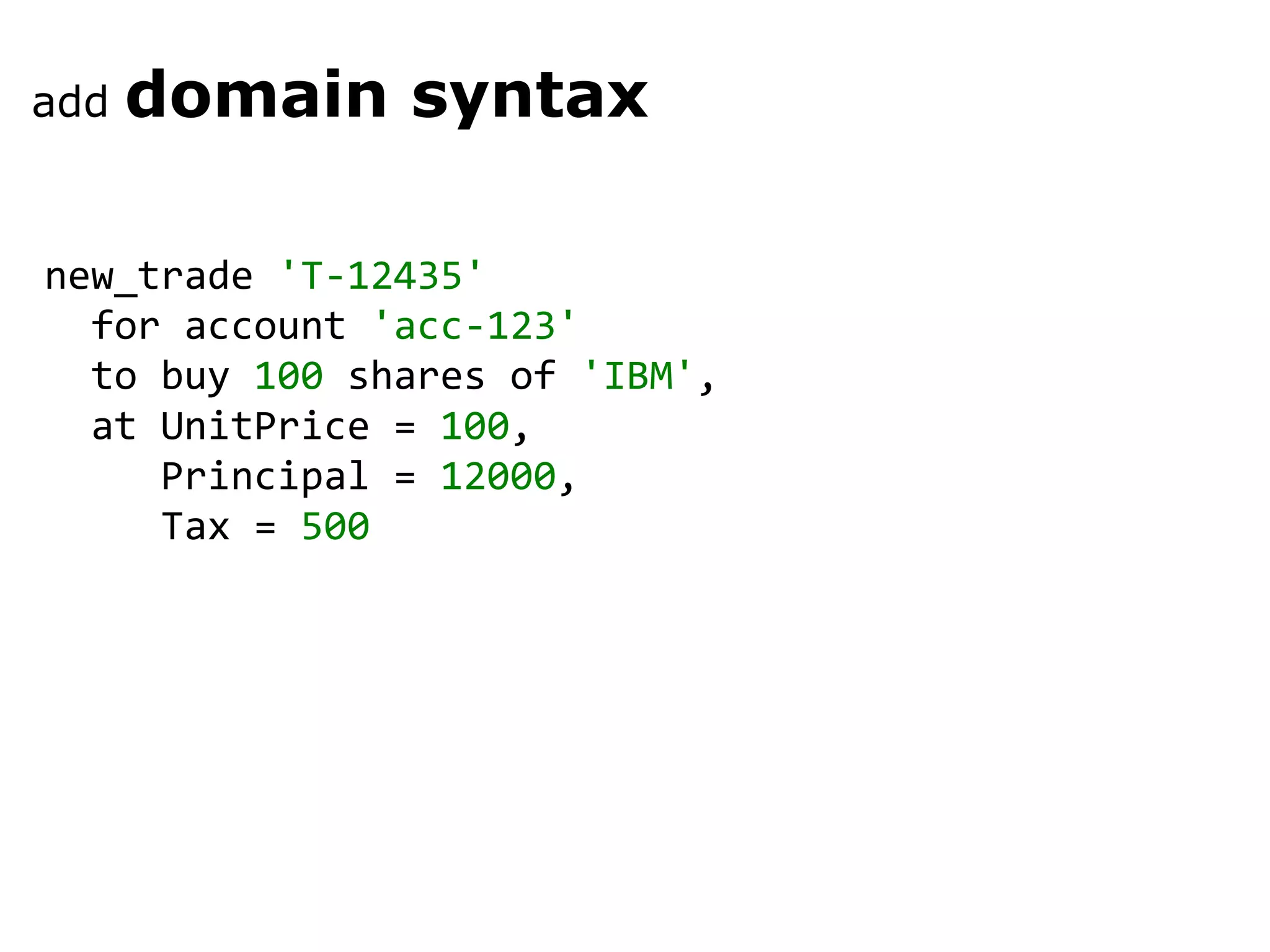

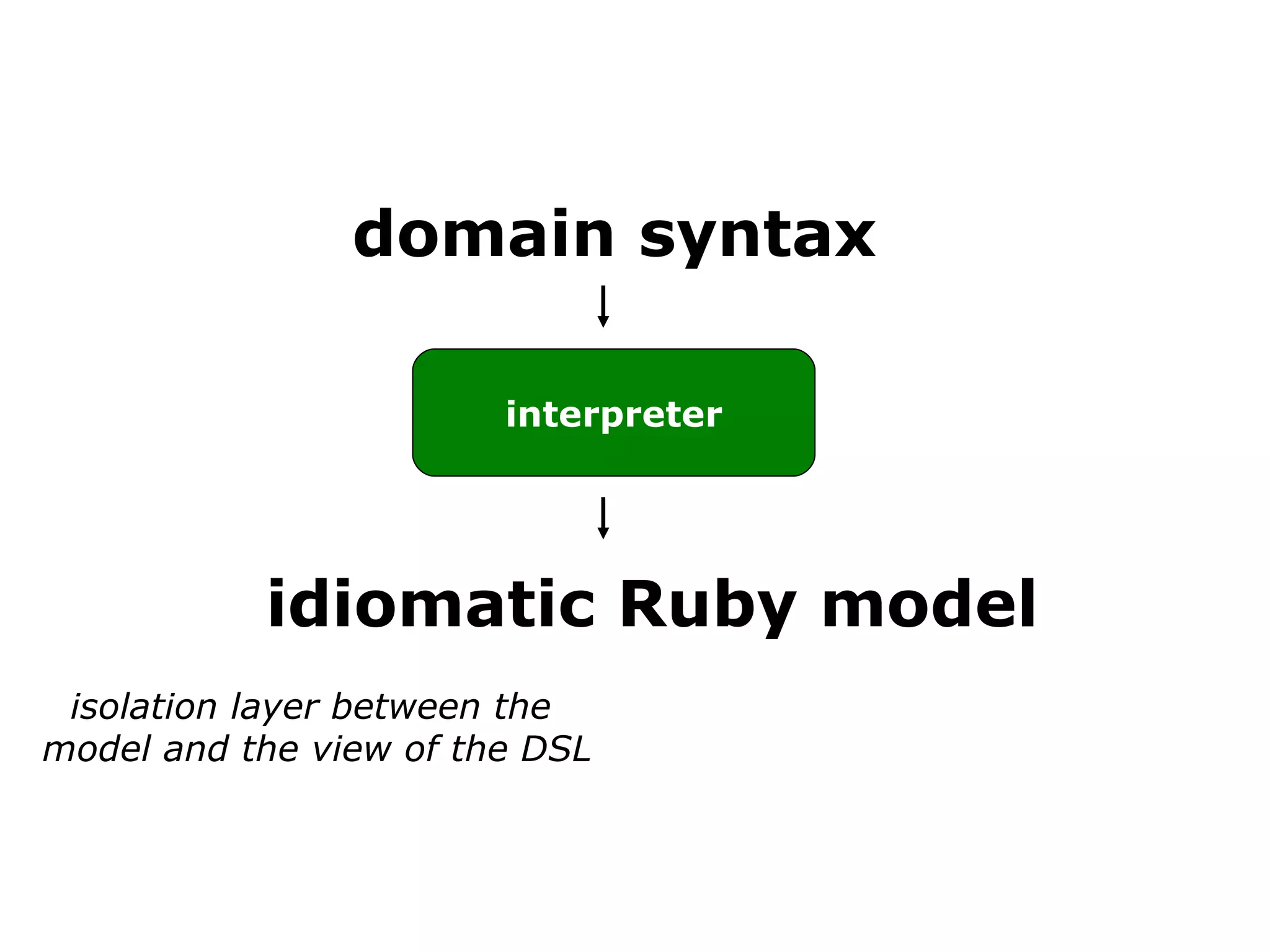



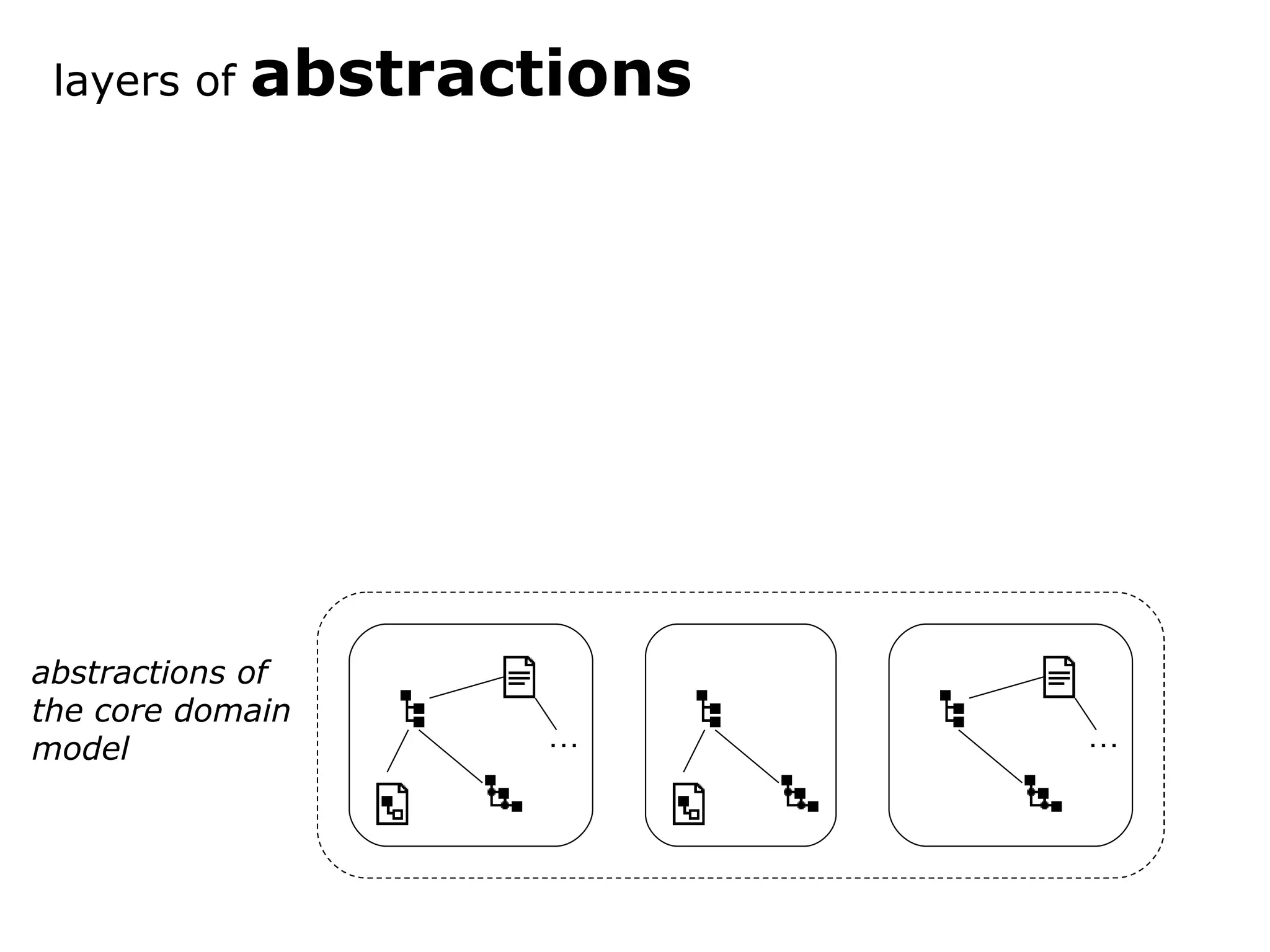
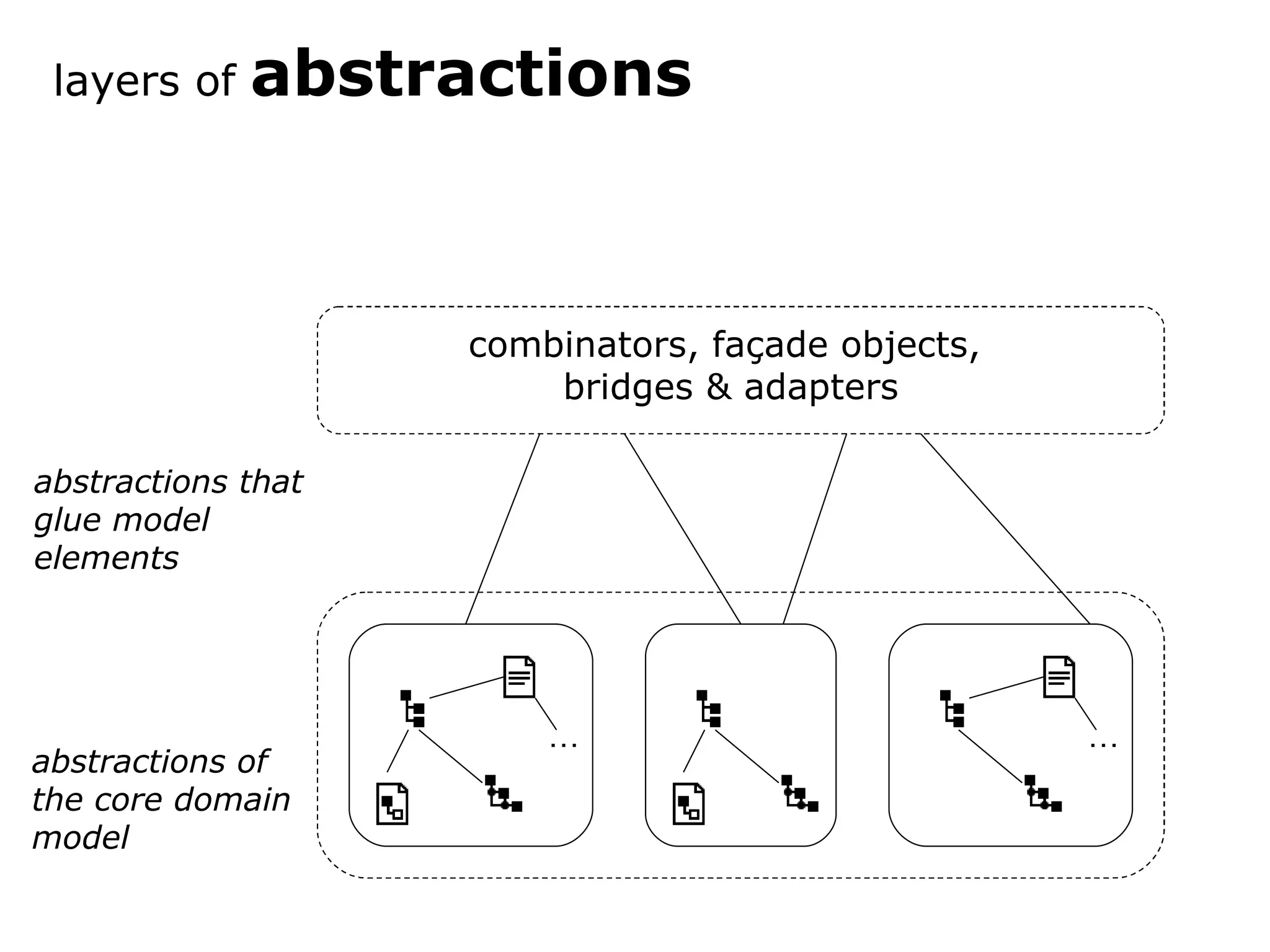
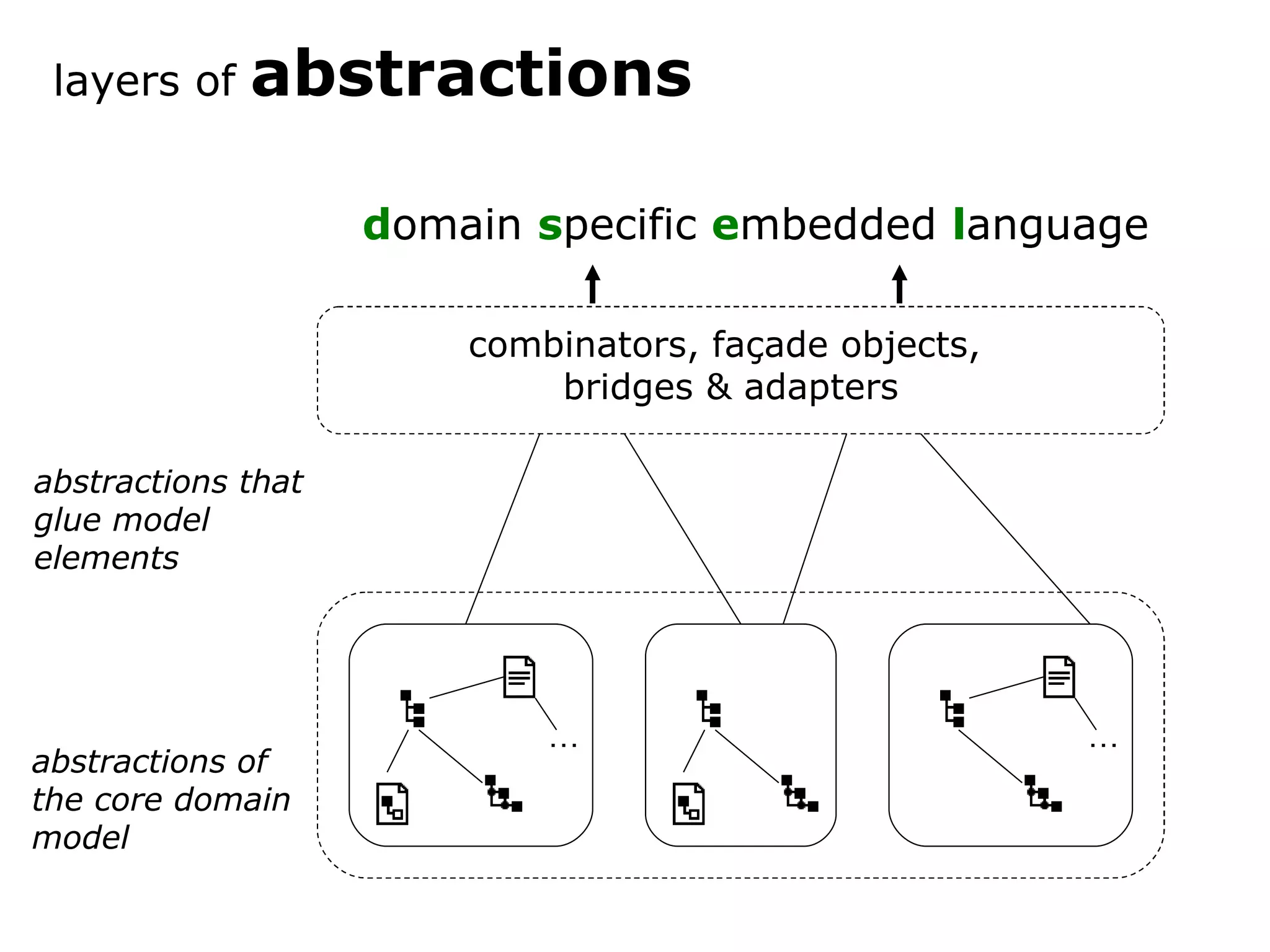
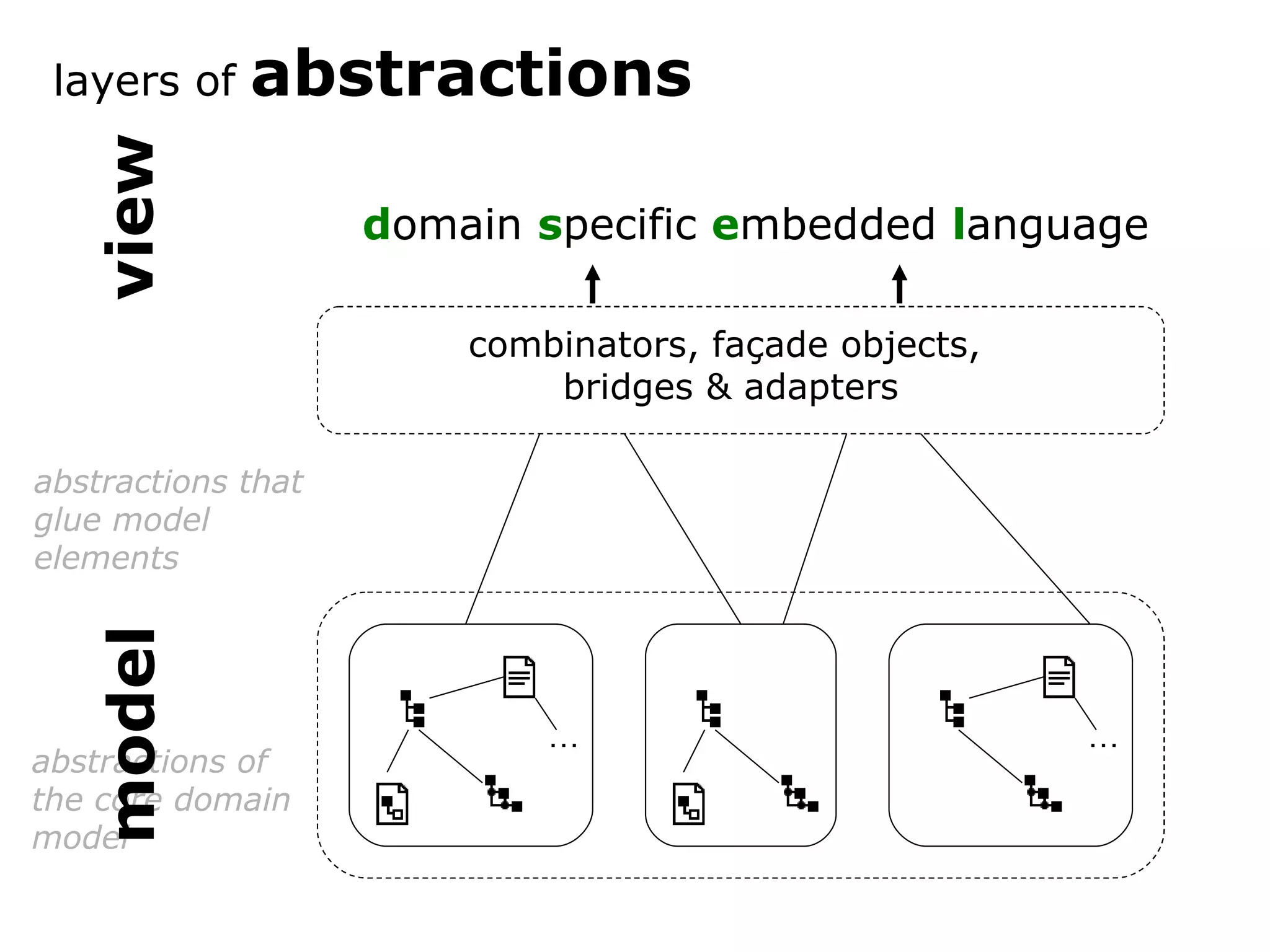
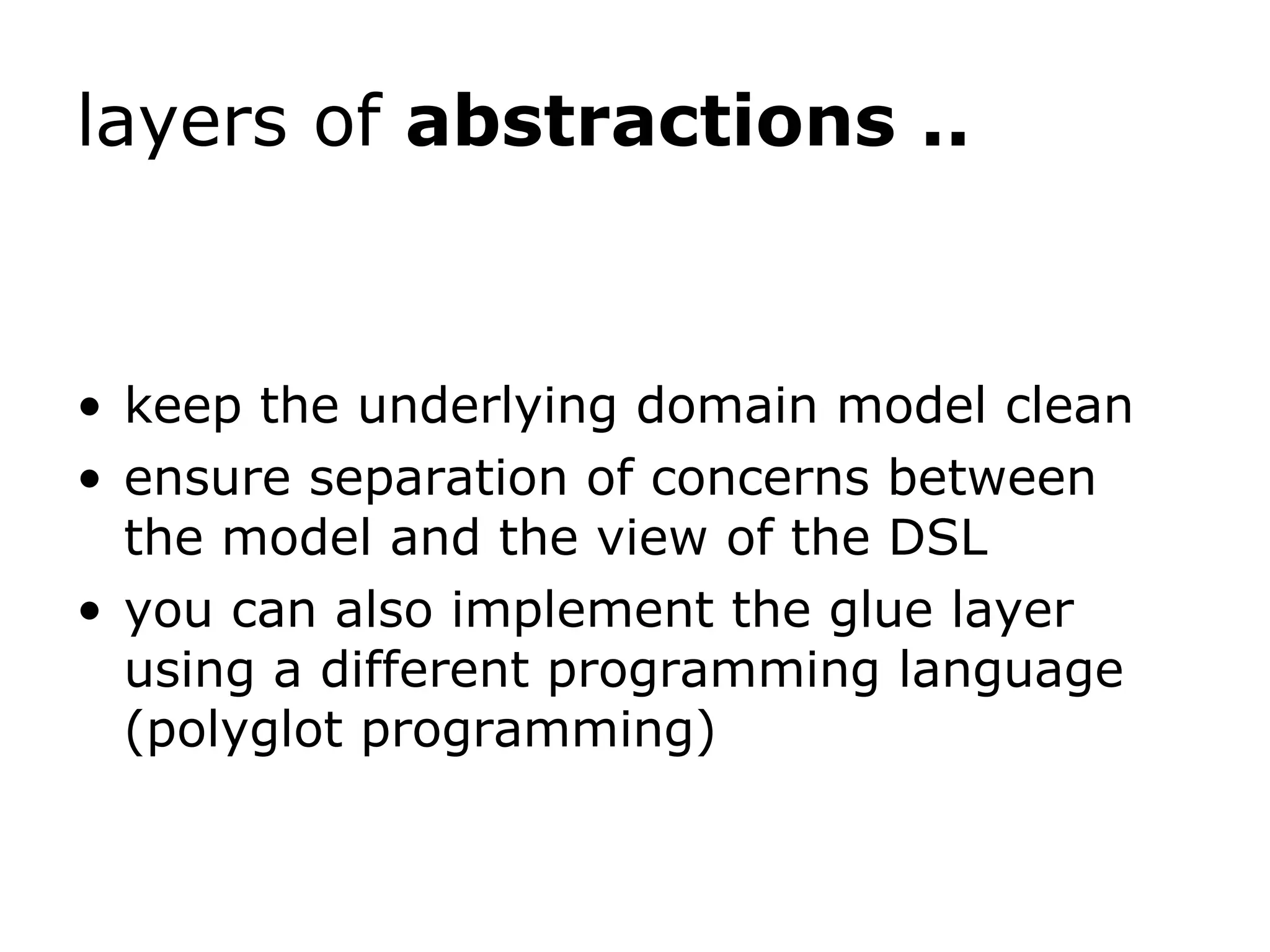
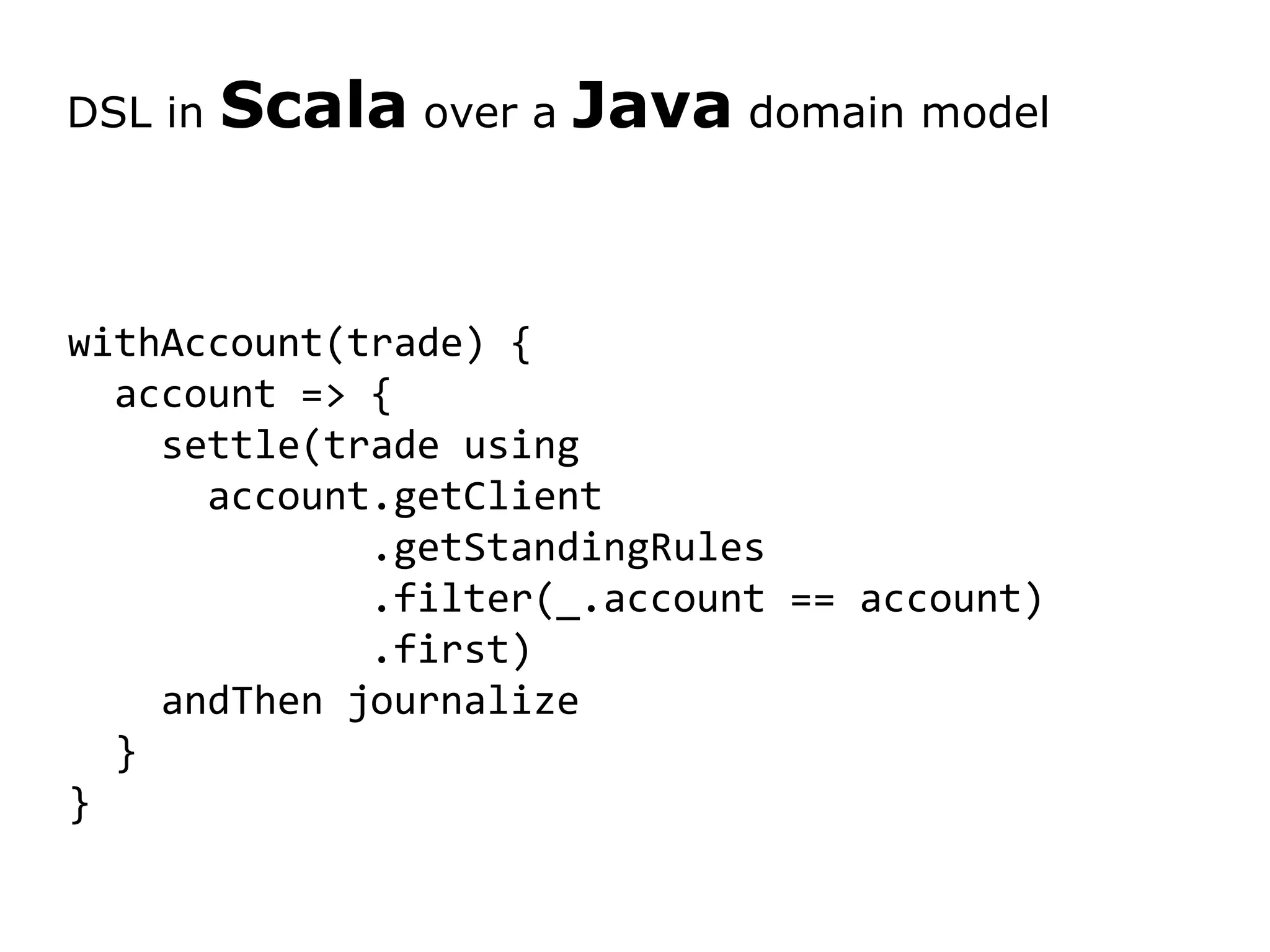
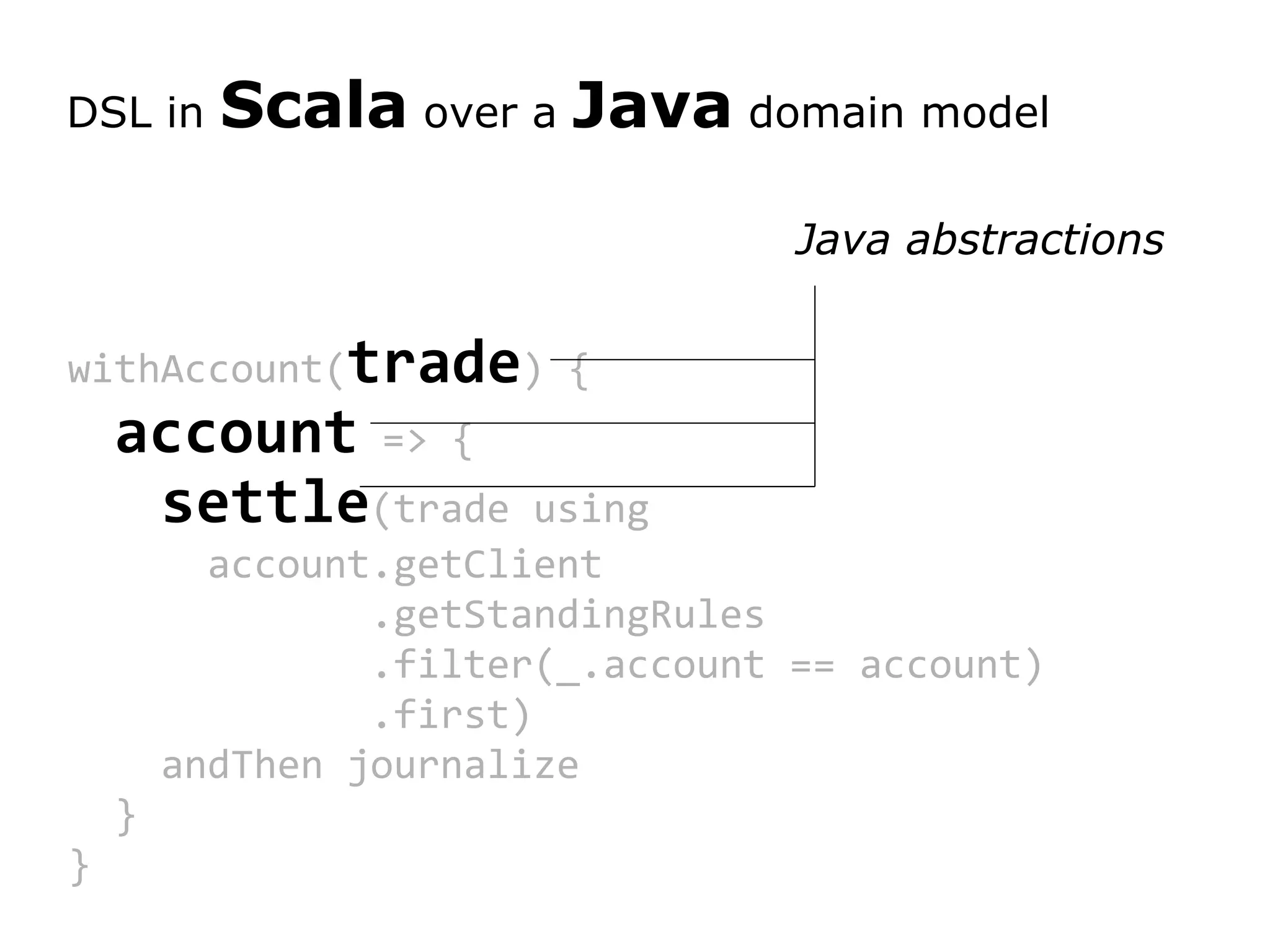

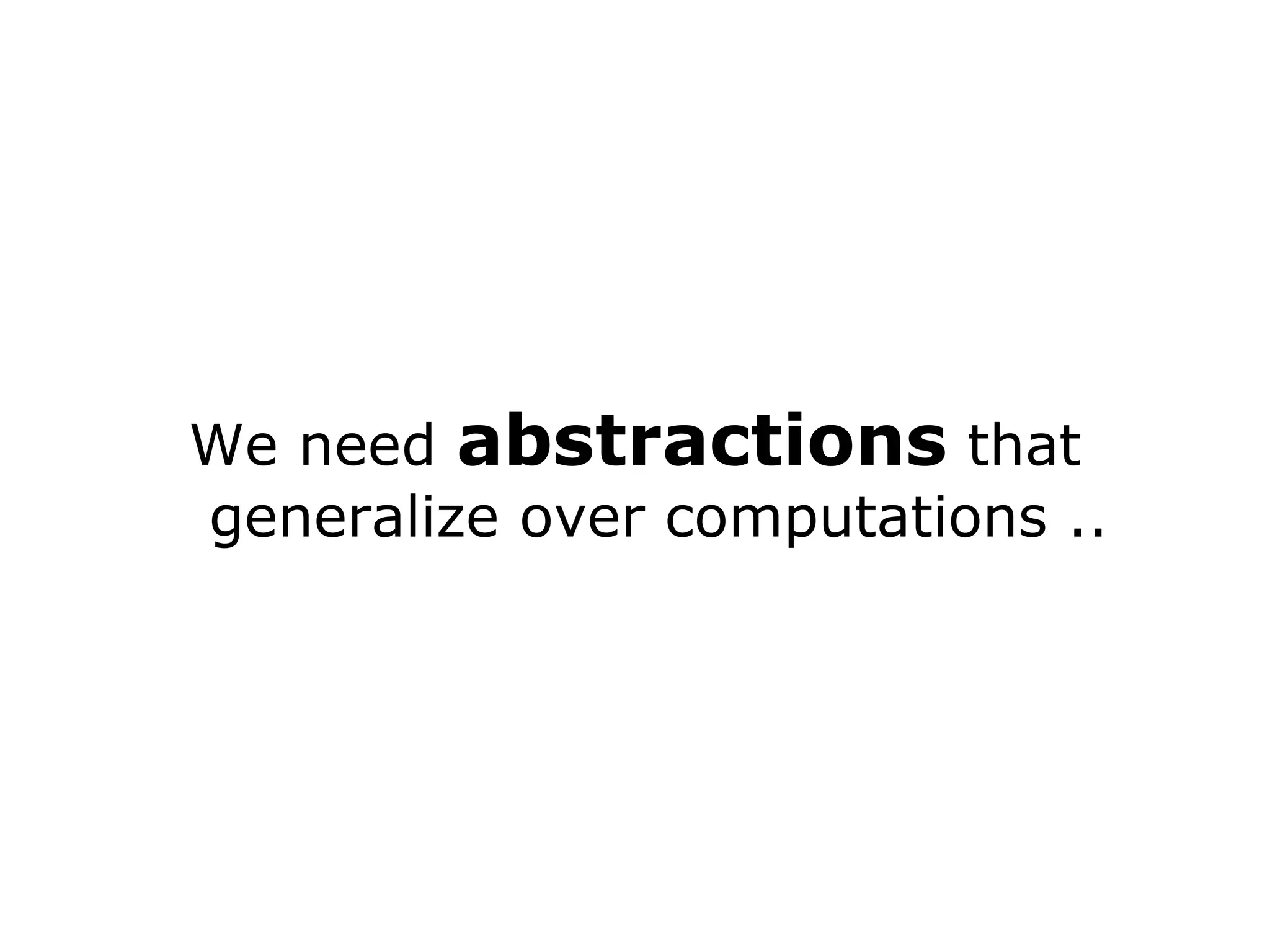

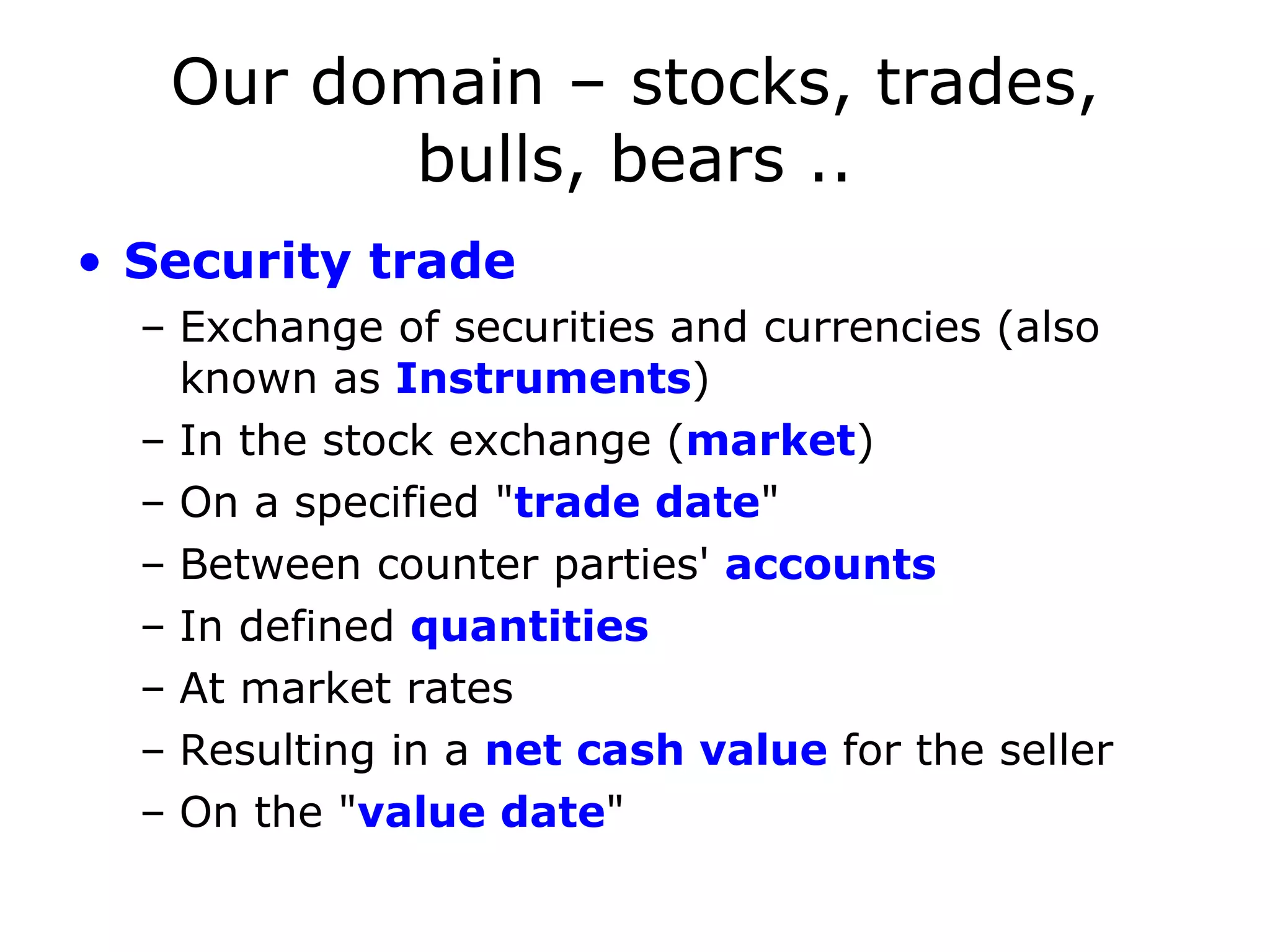
![// The Trade model case class Trade ( account: Account , instrument: Instrument , referenceNo: String , market: Market , unitPrice: BigDecimal , quantity: BigDecimal , tradeDate: Date = Calendar .getInstance.getTime, valueDate: Option [ Date ] = None , taxFees: Option [ List [( TaxFeeId , BigDecimal )]] = None , netAmount: Option [ BigDecimal ] = None )](https://image.slidesharecdn.com/phillyetedslnonotes-110503101217-phpapp01/75/DSL-expressive-syntax-on-top-of-a-clean-semantic-model-29-2048.jpg)


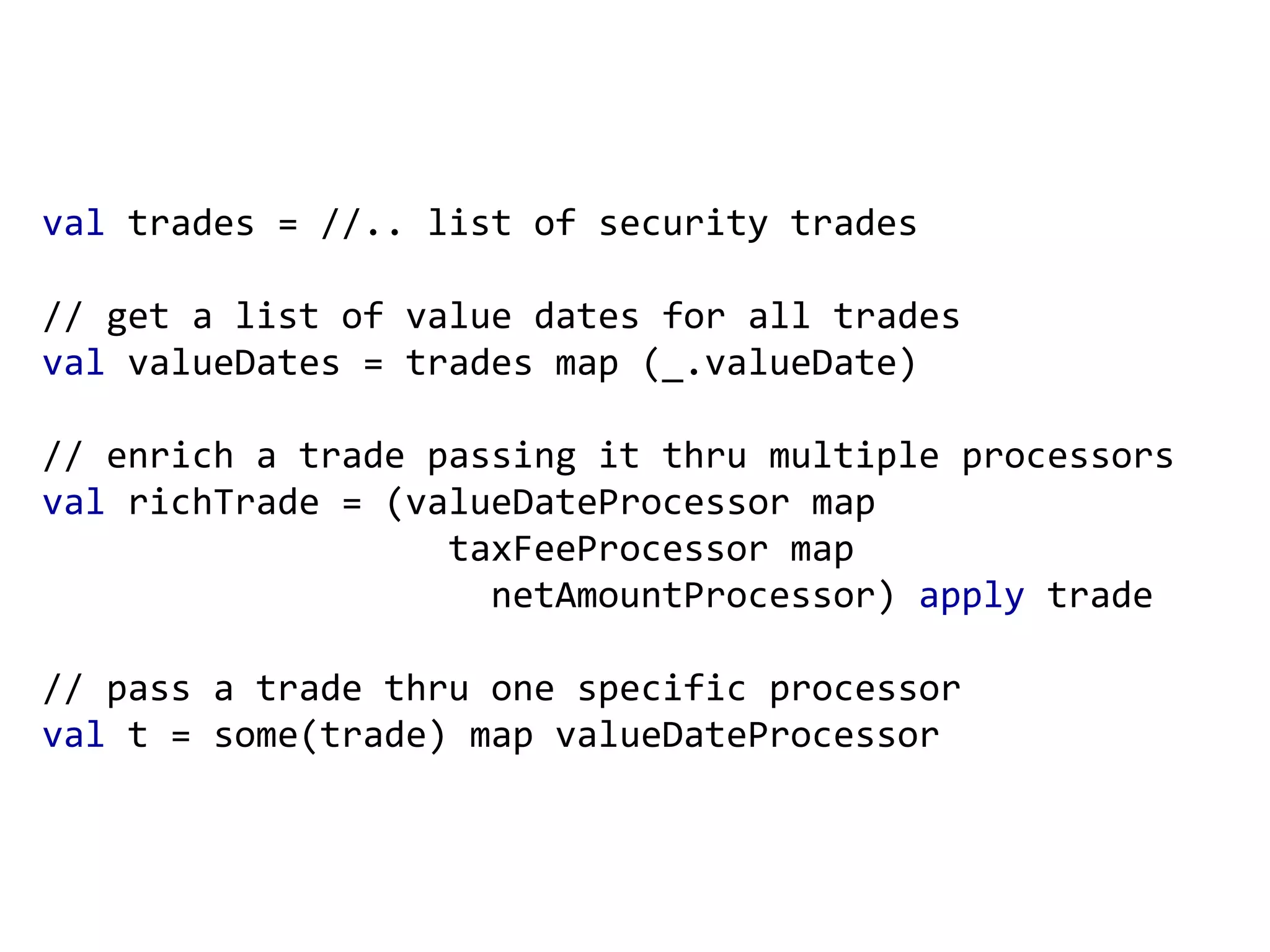






![sealed trait MA [ M [_], A ] extends PimpedType [ M [ A ]] { def map[ B ](f: A => B )( implicit t: Functor [ M ]): M [ B ] = t.fmap(value, f) source: scalaz : https://github.com/scalaz/scalaz a type class a pimp](https://image.slidesharecdn.com/phillyetedslnonotes-110503101217-phpapp01/75/DSL-expressive-syntax-on-top-of-a-clean-semantic-model-39-2048.jpg)
![trait Functor[ F [ _ ]] extends InvariantFunctor [ F ] { def fmap[ A , B ](r: F [ A ], f: A => B ): F [ B ] } source: scalaz : https://github.com/scalaz/scalaz](https://image.slidesharecdn.com/phillyetedslnonotes-110503101217-phpapp01/75/DSL-expressive-syntax-on-top-of-a-clean-semantic-model-40-2048.jpg)

![// map across the Function1 functor val richTrade = (valueDateProcessor map taxFeeProcessor map netAmountProcessor) apply trade Function1[] implicit def Function1Functor[R] = new Functor //..](https://image.slidesharecdn.com/phillyetedslnonotes-110503101217-phpapp01/75/DSL-expressive-syntax-on-top-of-a-clean-semantic-model-42-2048.jpg)
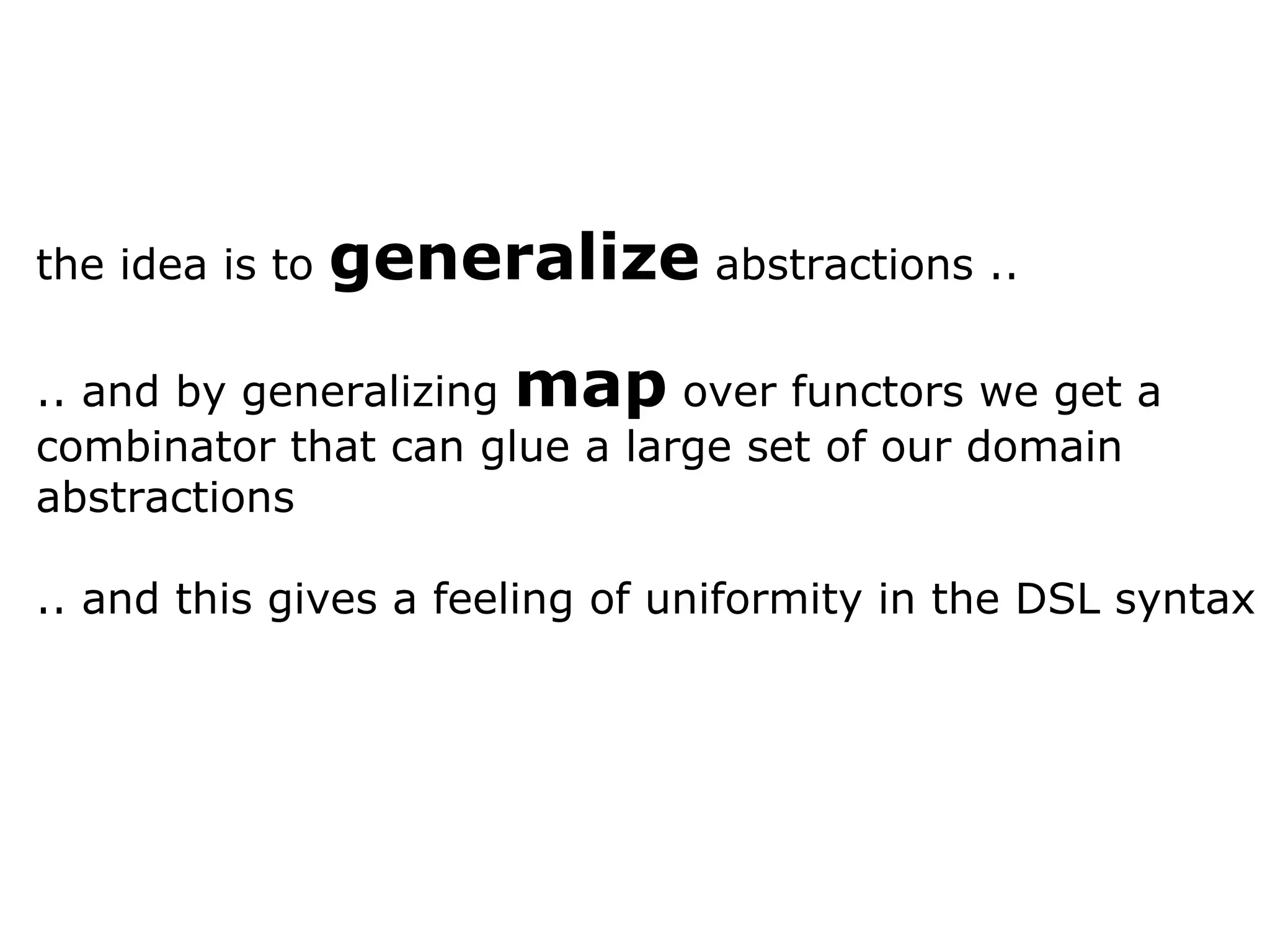





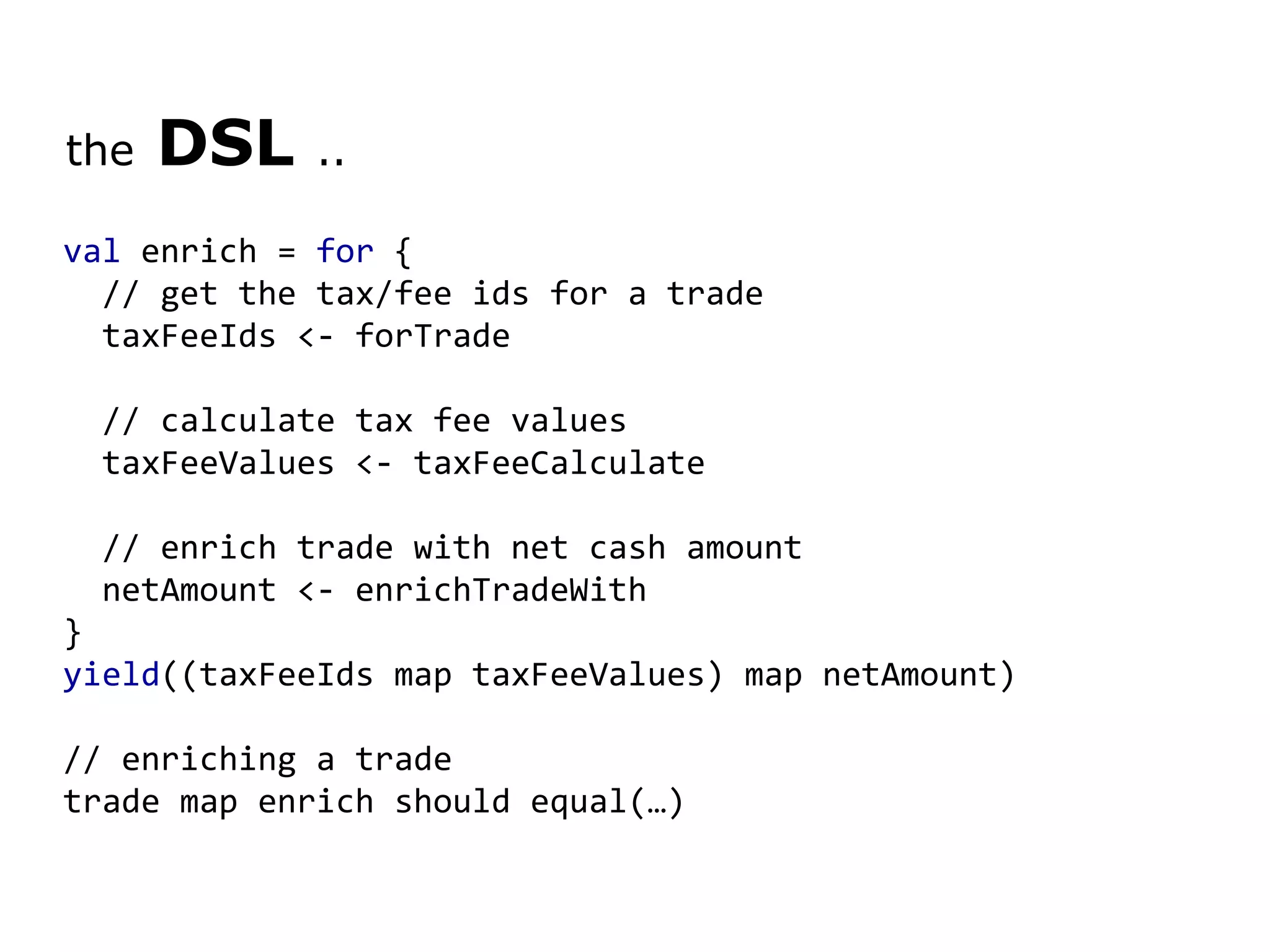

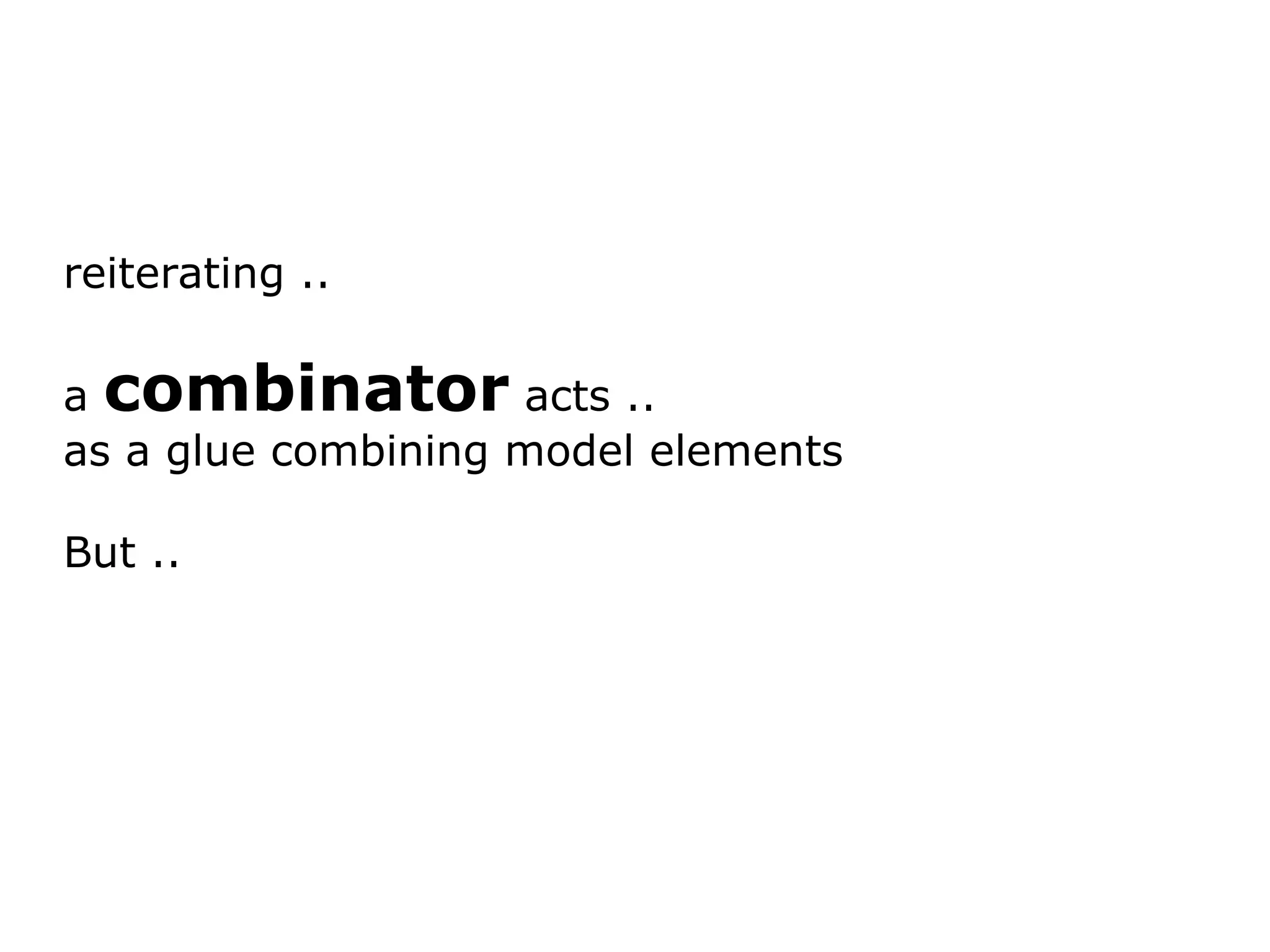
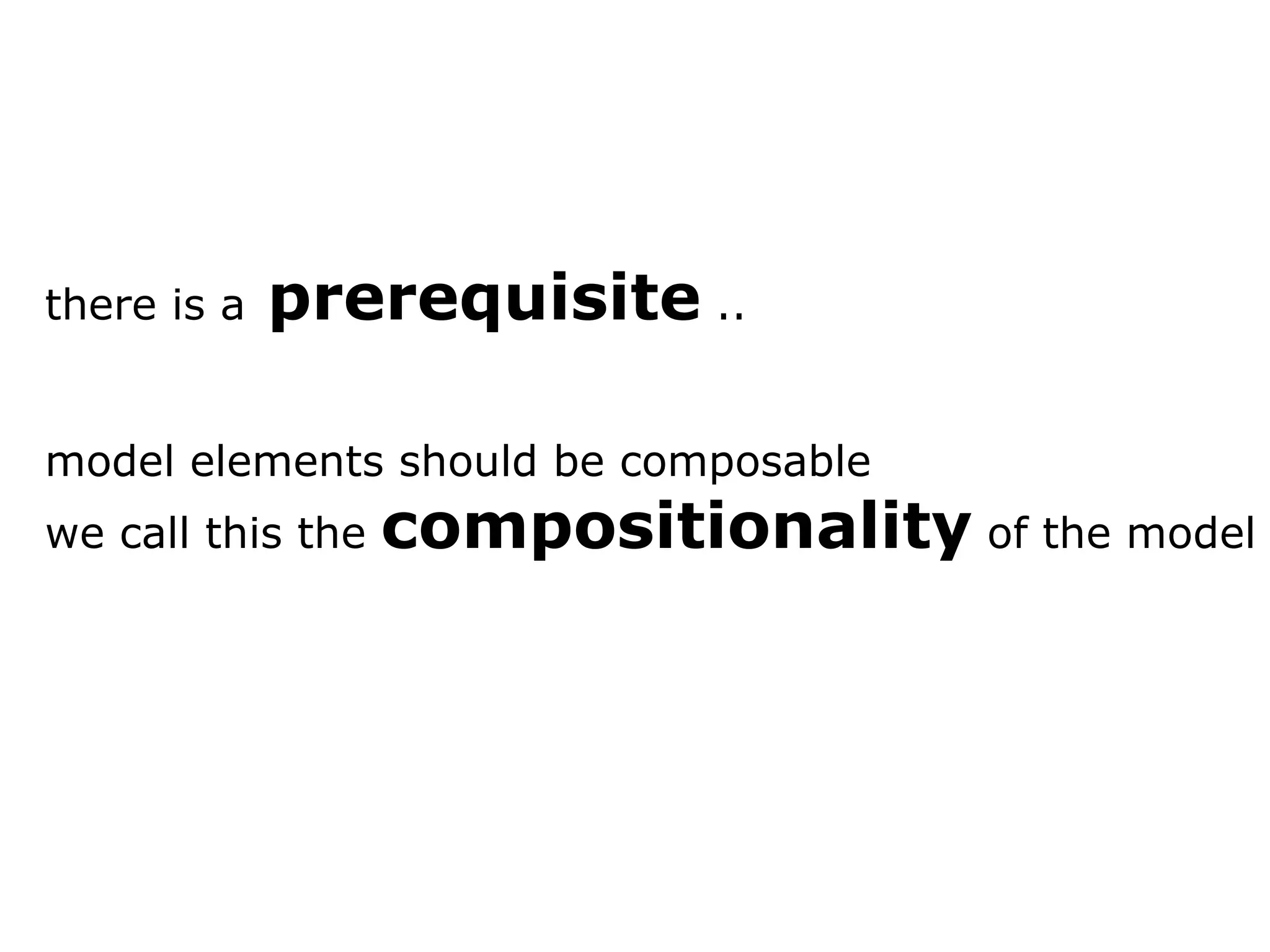


![the DSL .. // type alias for domain vocabulary type NetAmount = BigDecimal type CashValueCalculationStrategy = PartialFunction [ Market , Trade => NetAmount ] // declarative business logic val cashValueComputation : Trade => NetAmount = { trade => (forHongKong orElse forSingapore orElse forDefault)(trade.market)(trade) }](https://image.slidesharecdn.com/phillyetedslnonotes-110503101217-phpapp01/75/DSL-expressive-syntax-on-top-of-a-clean-semantic-model-55-2048.jpg)




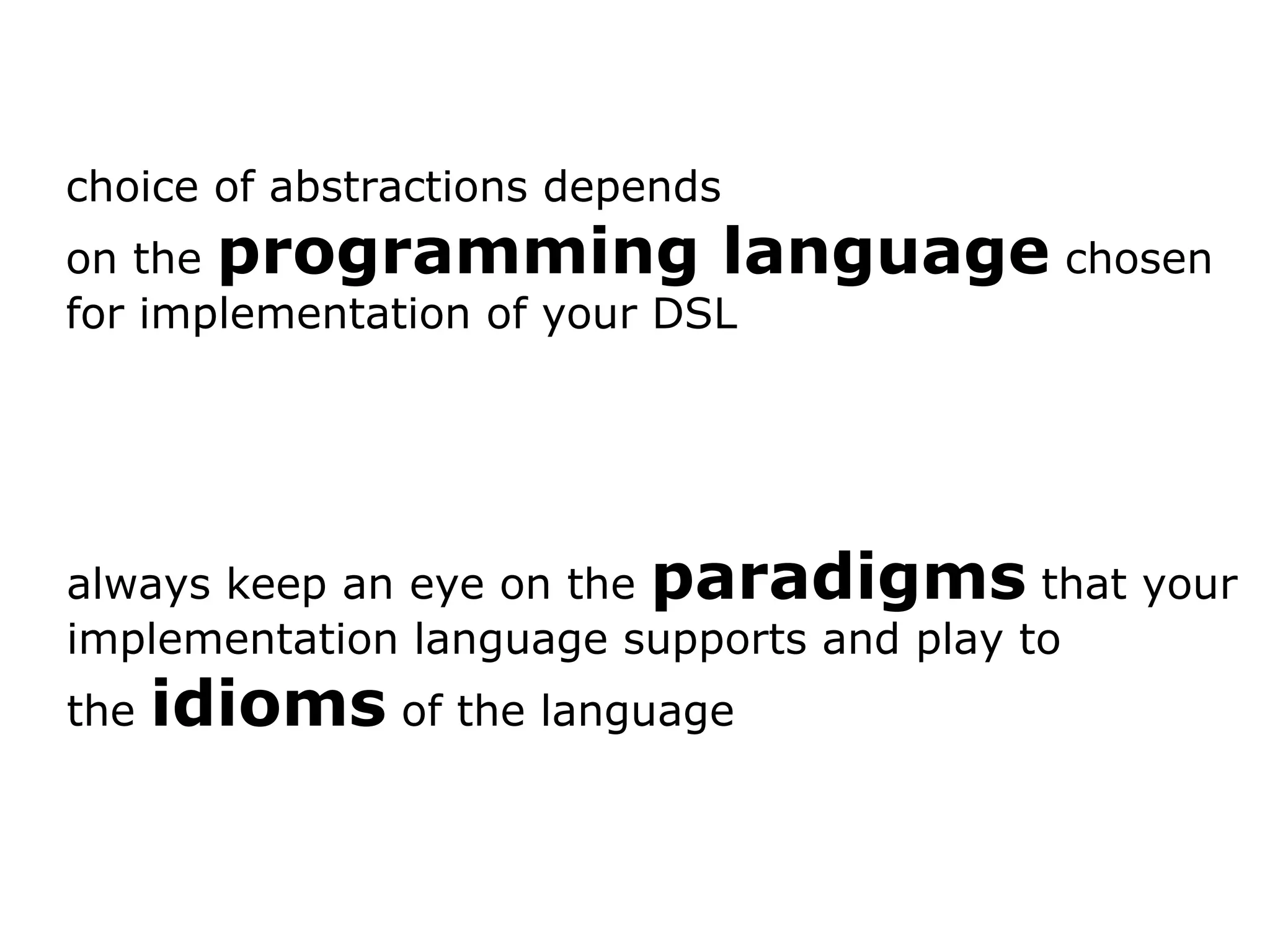
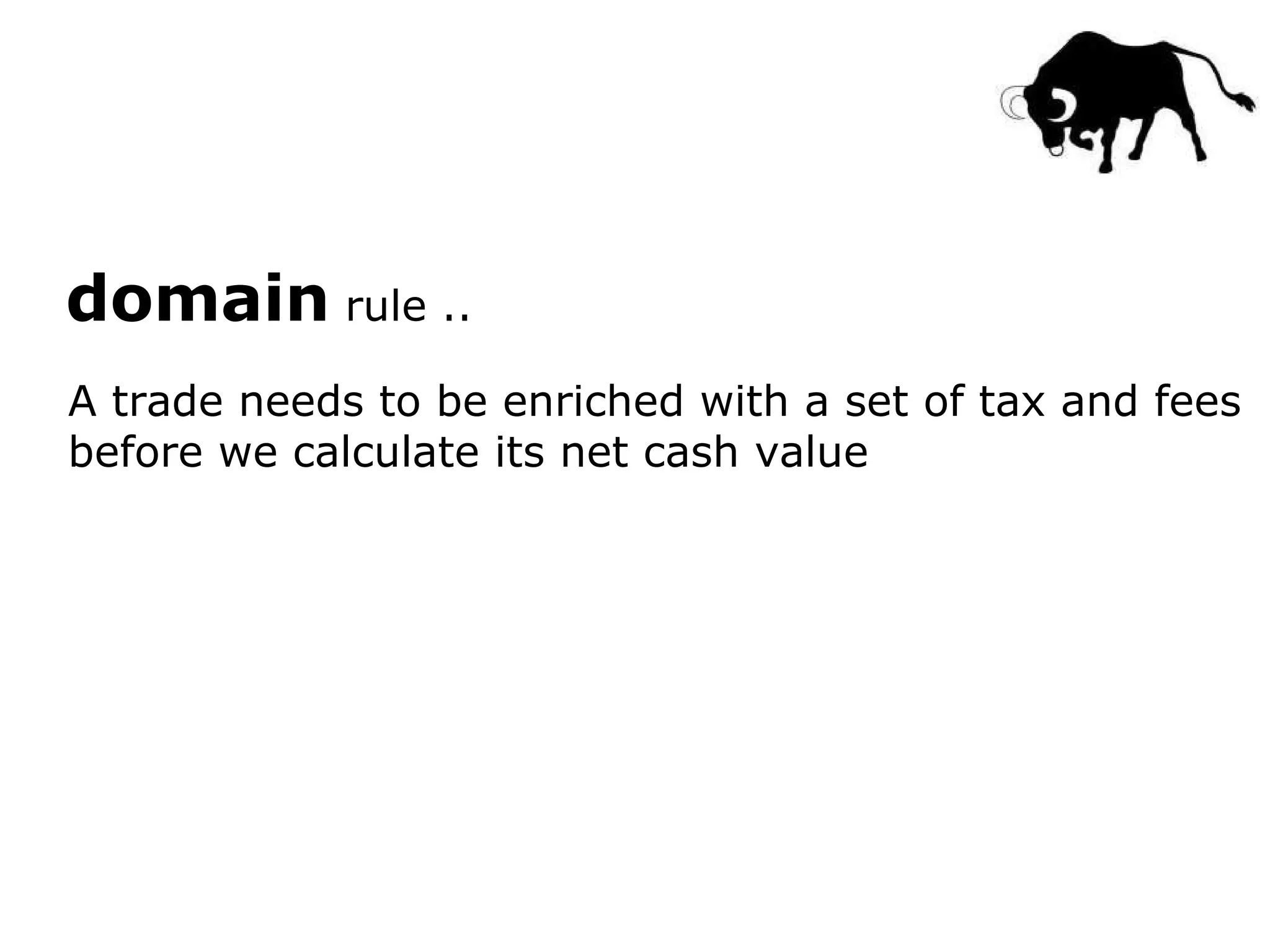


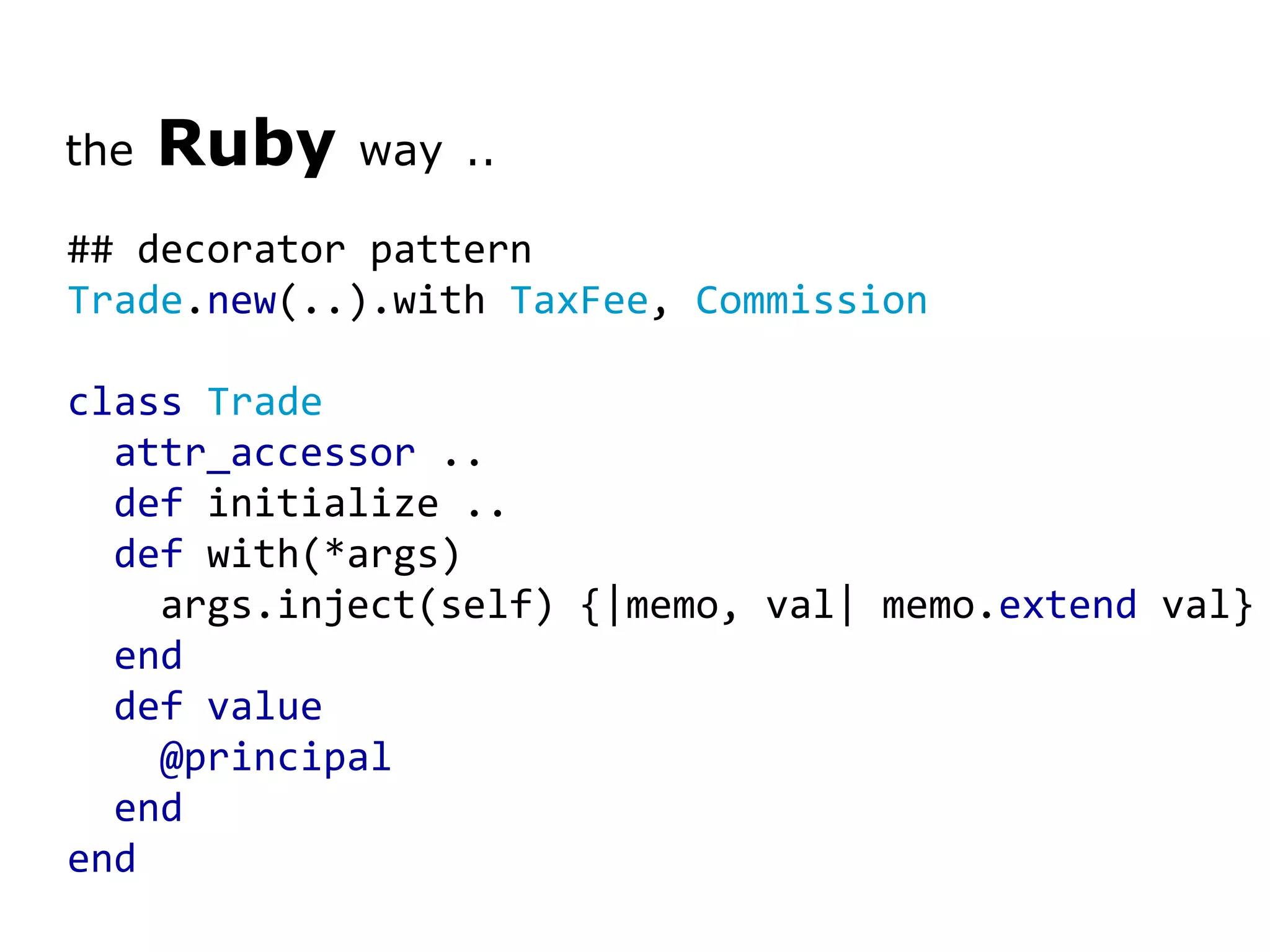

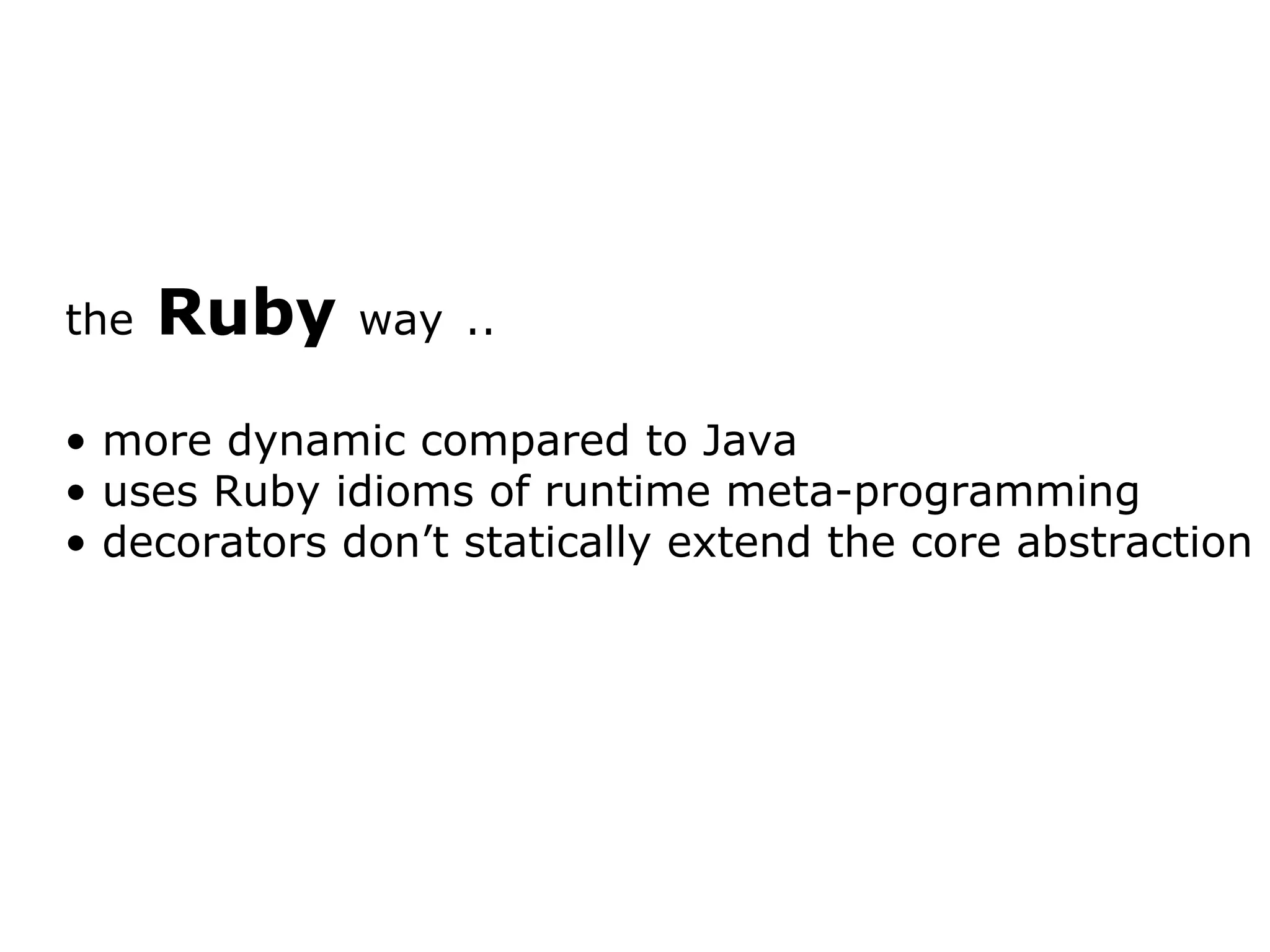
![if we were to do the same in Clojure .. ## decorator pattern (with-tax-fee trade (with-values :tax 12 ) (with-values :commission 23 )) ( defmacro with-tax-fee "wrap a function in one or more decorators" [func & decorators] `(redef ~func (-> ~func ~@decorators)))](https://image.slidesharecdn.com/phillyetedslnonotes-110503101217-phpapp01/75/DSL-expressive-syntax-on-top-of-a-clean-semantic-model-67-2048.jpg)

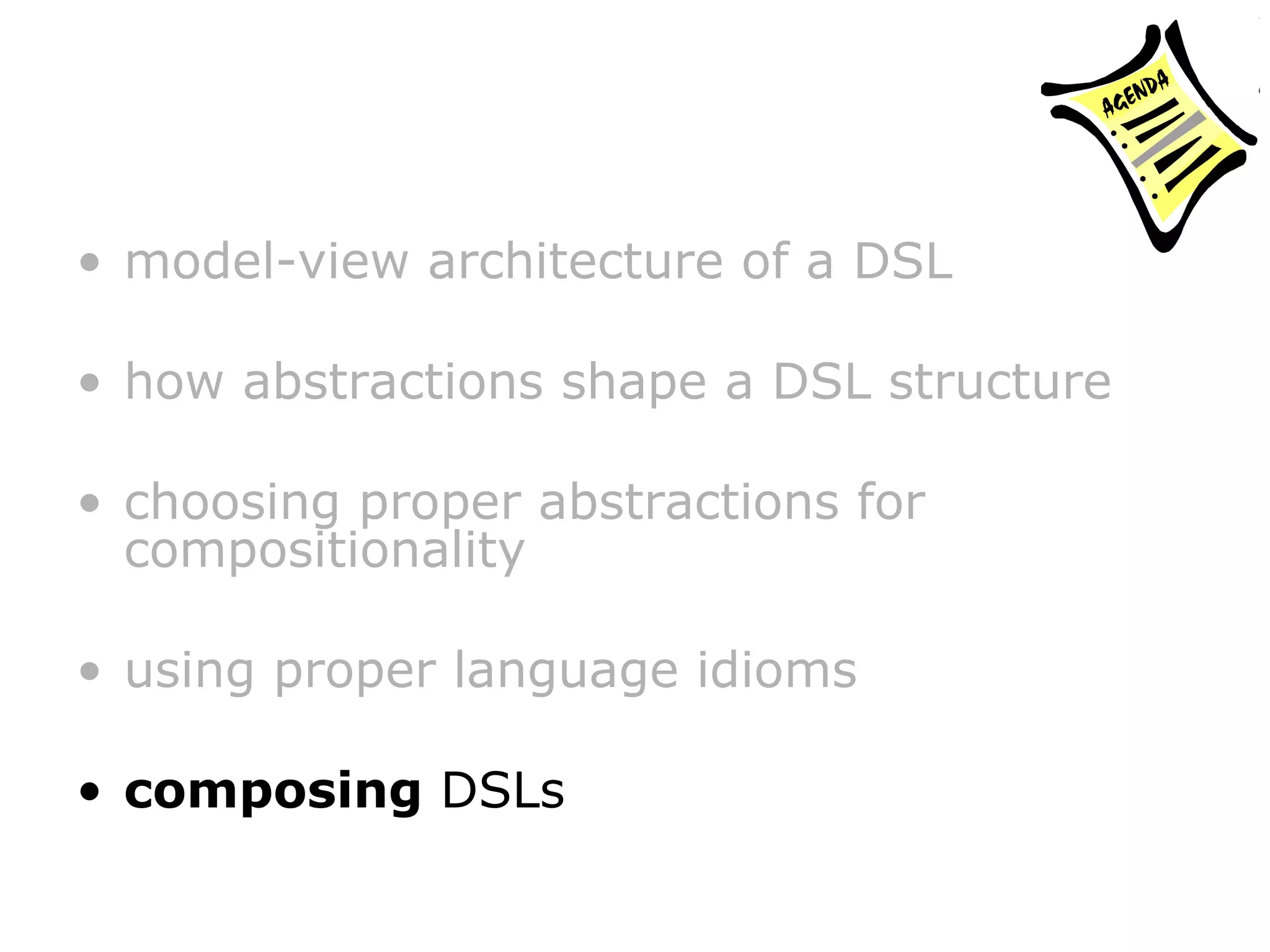
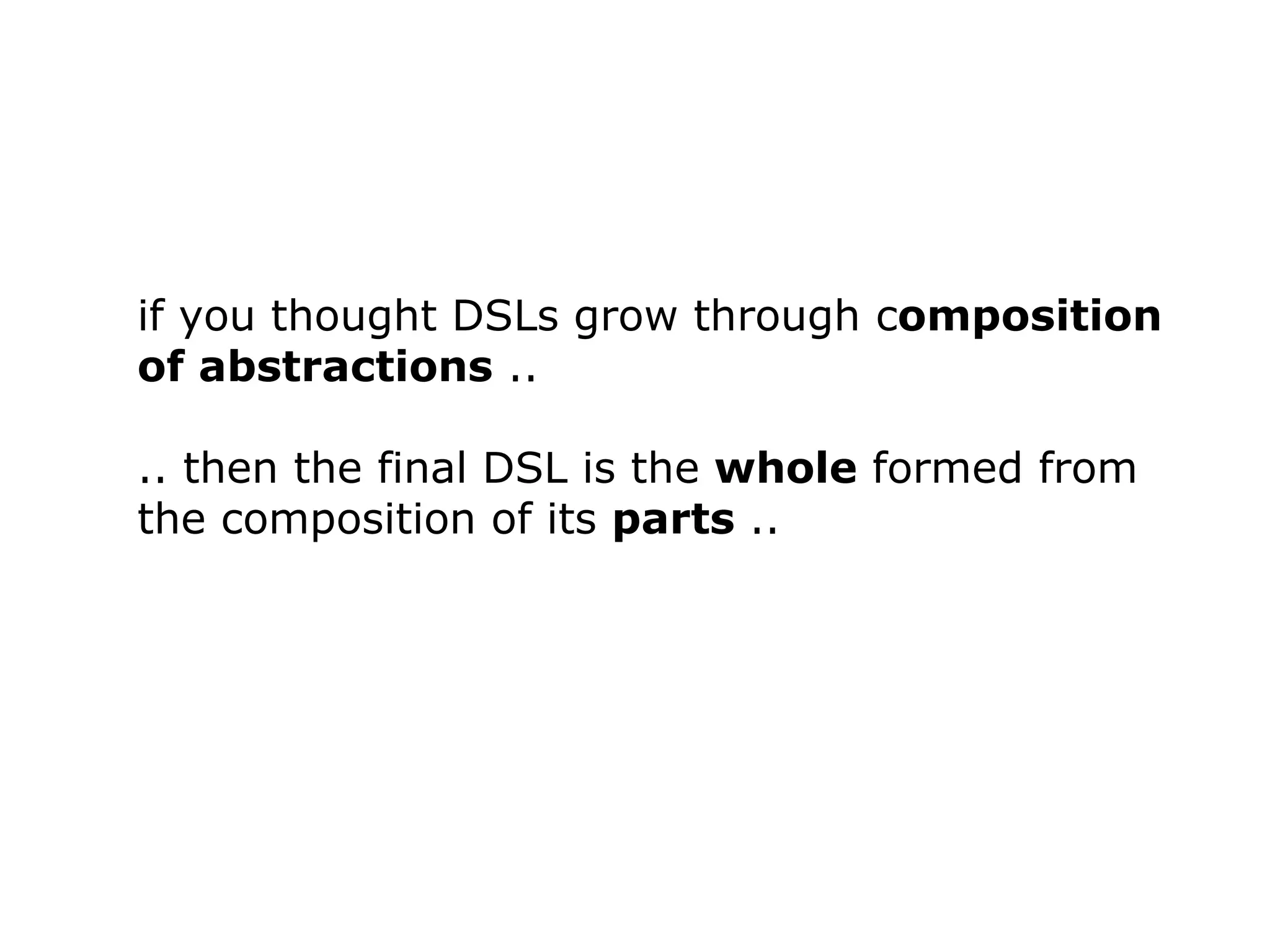

![trait TradeDsl { type T <: Trade def enrich: PartialFunction [ T , T ] //.. other methods } constrained abstract type abstract method](https://image.slidesharecdn.com/phillyetedslnonotes-110503101217-phpapp01/75/DSL-expressive-syntax-on-top-of-a-clean-semantic-model-72-2048.jpg)
![trait FixedIncomeTradeDsl extends TradeDsl { type T = FixedIncomeTrade import FixedIncomeTradingService ._ override def enrich: PartialFunction [ T , T ] = { case t => t.cashValue = cashValue(t) t.taxes = taxes(t) t.accruedInterest = accruedInterest(t) t } } object FixedIncomeTradeDsl extends FixedIncomeTradeDsl concrete type for fixed income trade concrete definition for enrichment of fixed income trade](https://image.slidesharecdn.com/phillyetedslnonotes-110503101217-phpapp01/75/DSL-expressive-syntax-on-top-of-a-clean-semantic-model-73-2048.jpg)
![trait EquityTradeDsl extends TradeDsl { type T = EquityTrade import EquityTradingService ._ override def enrich: PartialFunction [ T , T ] = { case t => t.cashValue = cashValue(t) t.taxes = taxes(t) t } } object EquityTradeDsl extends EquityTradeDsl concrete type for equity trade concrete definition for enrichment of equity trade](https://image.slidesharecdn.com/phillyetedslnonotes-110503101217-phpapp01/75/DSL-expressive-syntax-on-top-of-a-clean-semantic-model-74-2048.jpg)

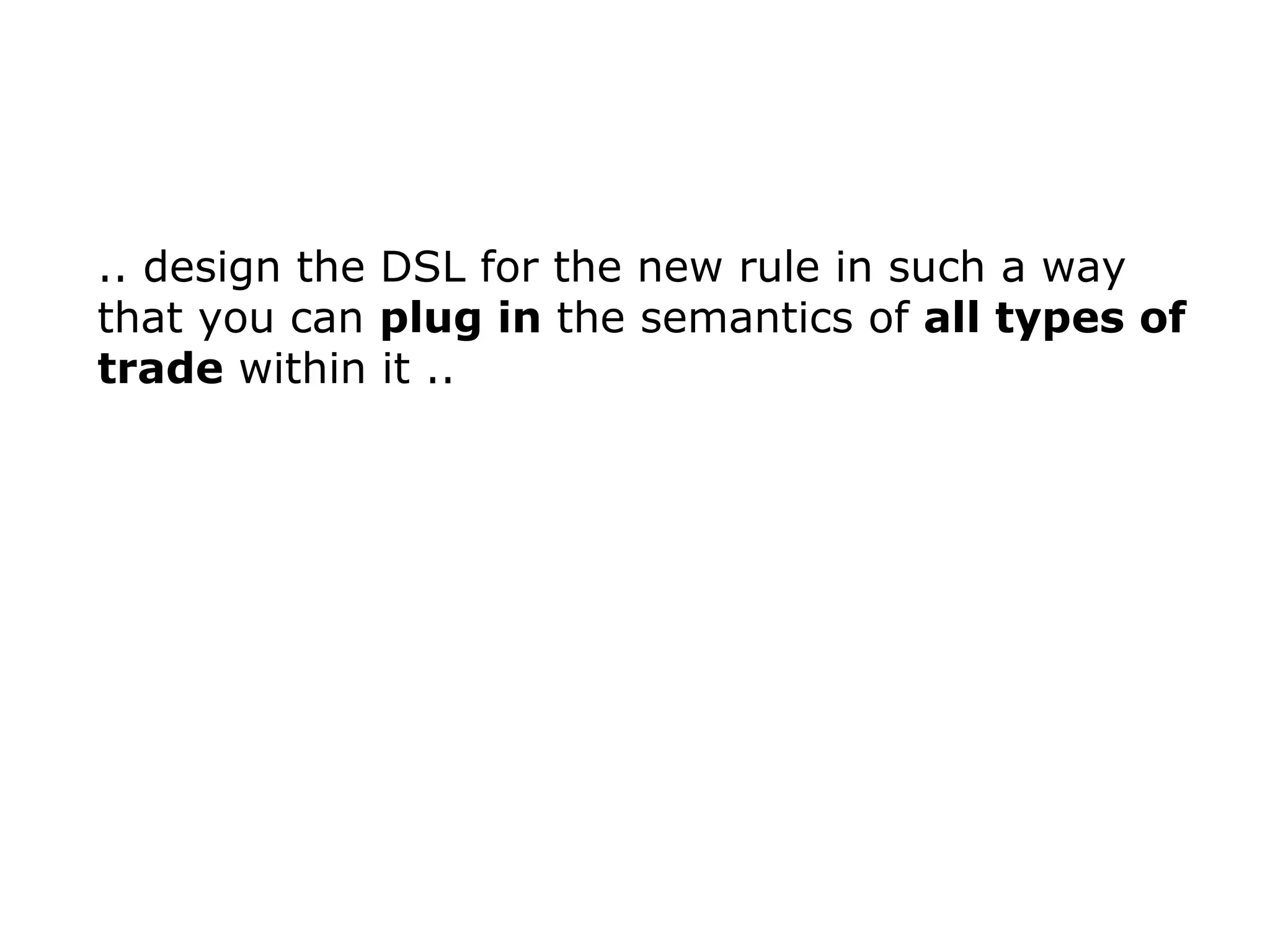

![trait MarketRuleDsl extends TradeDsl { val semantics: TradeDsl type T = semantics. T override def enrich: PartialFunction [ T , T ] = { case t => val tr = semantics.enrich(t) tr match { case x if x.market == NYSE && x.principal > 1000 => tr.cashValue = tr.cashValue - tr.principal * 0.1 tr case x => x } } }](https://image.slidesharecdn.com/phillyetedslnonotes-110503101217-phpapp01/75/DSL-expressive-syntax-on-top-of-a-clean-semantic-model-78-2048.jpg)
![trait MarketRuleDsl extends TradeDsl { val semantics : TradeDsl type T = semantics.T override def enrich: PartialFunction[T, T] = { case t => val tr = semantics.enrich(t) tr match { case x if x.market == NYSE && x.principal > 1000 => tr.cashValue = tr.cashValue - tr.principal * 0.1 tr case x => x } } } polymorphic embedding new business rule that acts on top of the enriched trade](https://image.slidesharecdn.com/phillyetedslnonotes-110503101217-phpapp01/75/DSL-expressive-syntax-on-top-of-a-clean-semantic-model-79-2048.jpg)

